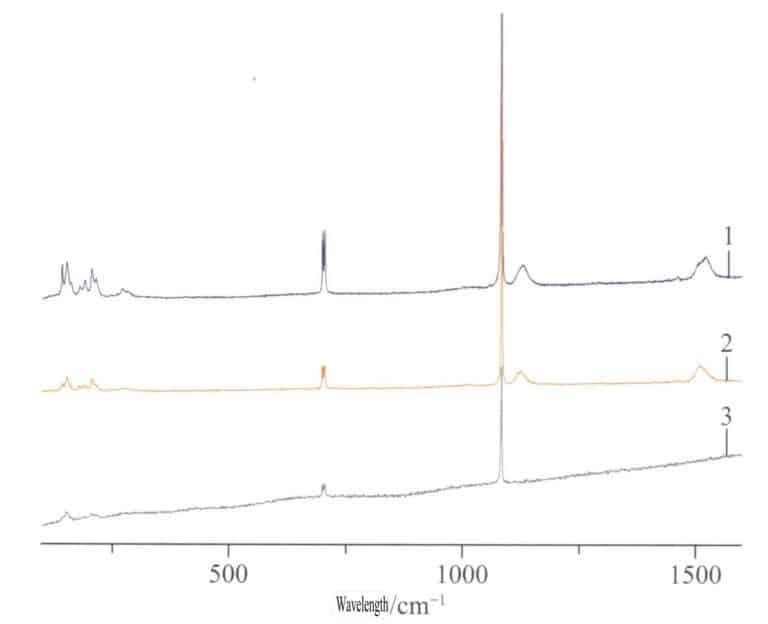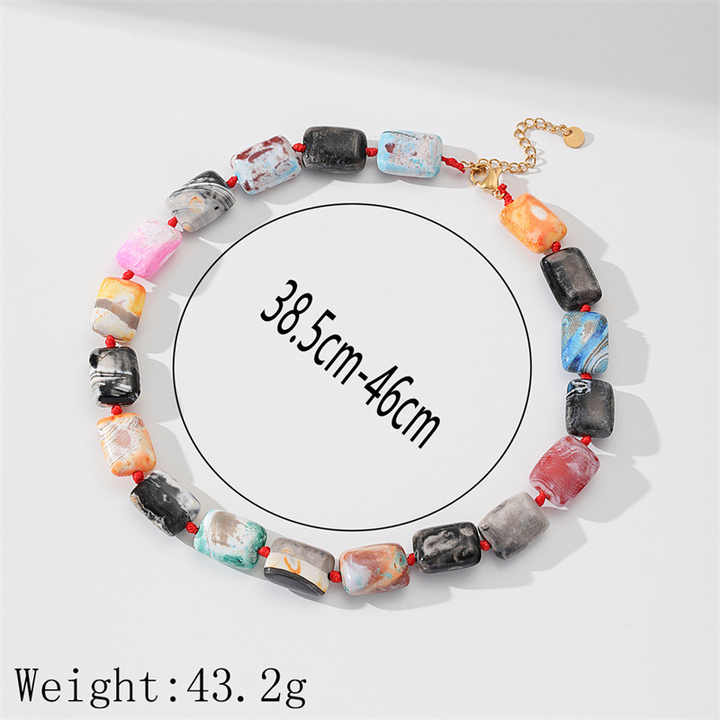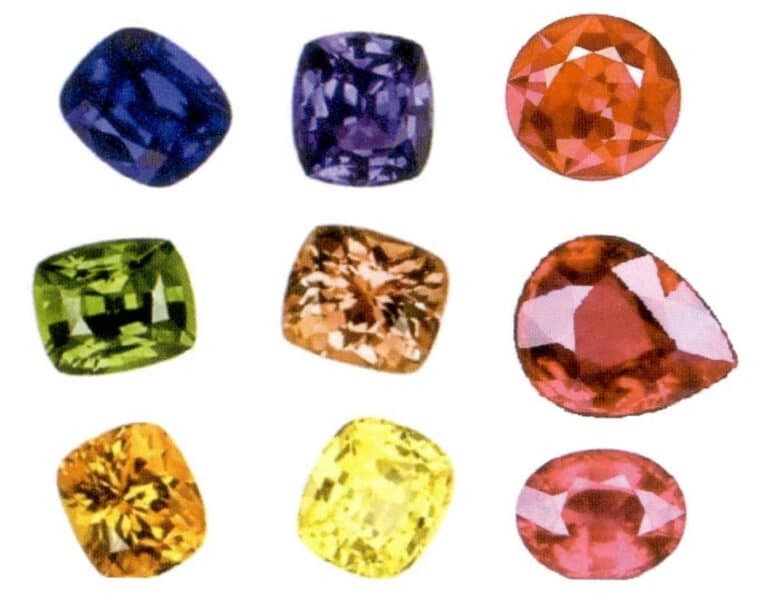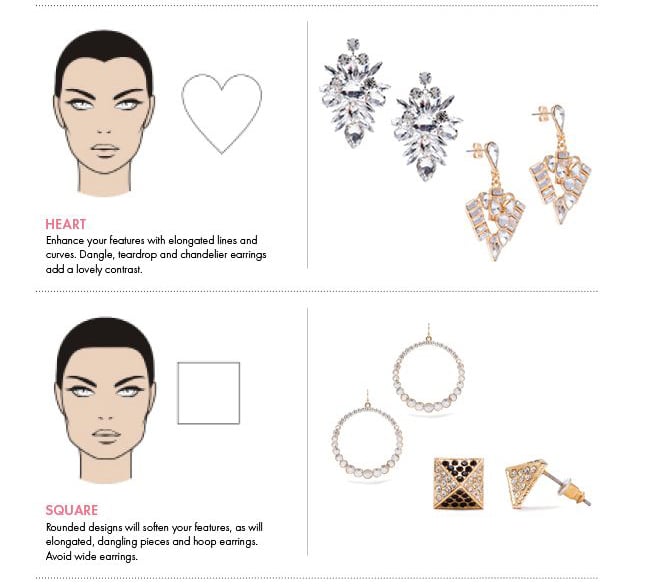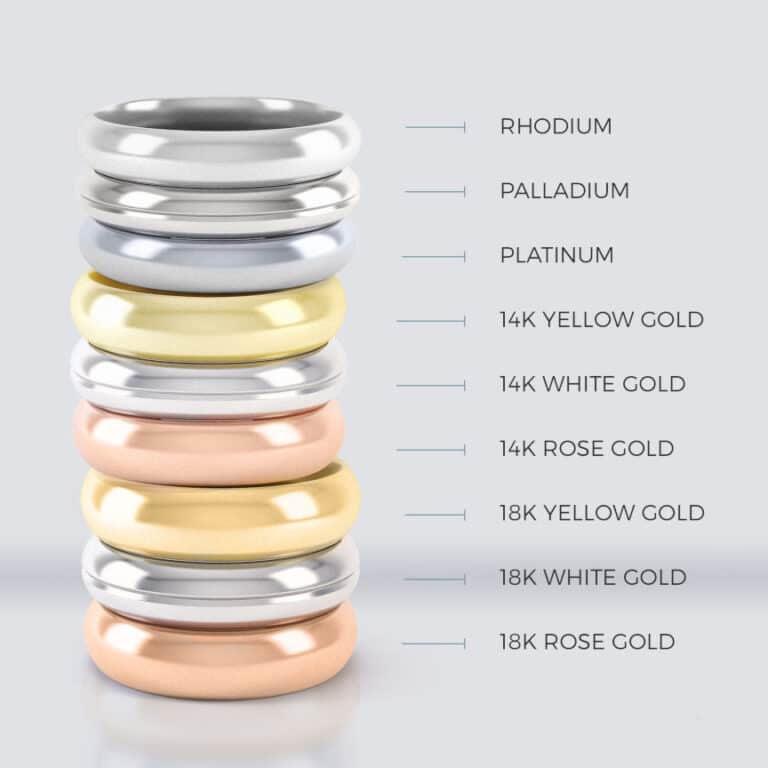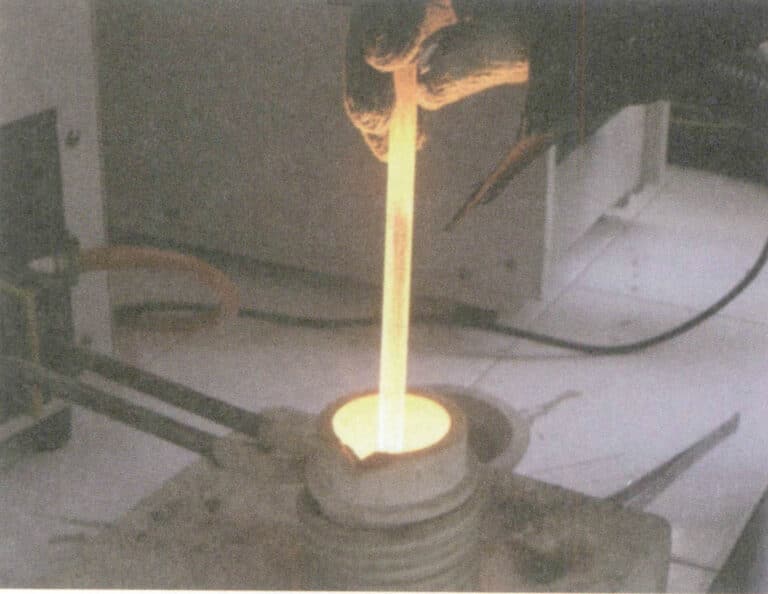Glamorous Organic Gemstones: The Application History, Culture and Gemological Characteristics of Pearls
Basic introduction of Organic Gemstones and Pearls
Introduction:
Gemstones, also known as precious and semi-precious stones, are generally considered to be naturally occurring materials that are beautiful, durable, rare, and acceptable, have aesthetic value, and can be processed into decorative items. In gemology, gemstones can be classified into single-crystal, jade, and organic see Figure 0-0-1.

Table of Contents
Section ⅠCharacteristics of Organic Gemstones
As the name suggests, organic gemstones are those formed from organic processes. The main difference between organic gemstones and inorganic single-crystal gemstones and jade is that organic gemstones are related to the activities of animals and plants, adhering to biological and biomineralization laws.
The main types of organic gemstones include pearls, corals, ivory, and other dental materials, as well as amber, shells, jets, tortoiseshells, and horns. Although some organic gemstones can be cultivated through artificial intervention in their formation process, such as cultured pearls and shells, these organic gemstones cannot be synthesized in a laboratory.
The most important identification features of organic gemstones are generally closely related to their origin, such as the concentric ring growth structure of pearls, the concentric radial growth structure of corals, the layered growth structure of shells, the concentric ring growth structure of ivory, and the flow patterns of amber.
Most organic gemstone jewelry requires careful maintenance. Organic gemstones generally have lower hardness and higher toughness, with a Mohs hardness typically around 2.5-4. Avoid scratching against metal and avoid rubbing against other inorganic gemstones and jade. Most organic gemstones are composed of both organic and inorganic materials. The inorganic part mainly consists of carbonates and phosphates. Carbonates are easily eroded by acids, which can damage organic gemstones. In case of acid exposure, rinse immediately with clean water, dry with a soft cloth, and air dry in a cool place. Organic materials are susceptible to erosion from organic solvents such as ethanol, ether, and acetone, so contact with nail polish, detergents, and cosmetics should be avoided, as well as contact with sweat. Some organic gemstones may change color and lose Luster due to dehydration, as they contain a small amount of water, so they should be protected from prolonged exposure to sunlight and continuous high-temperature baking.
Organic gemstones have a wide range of uses. In addition to being used for jewelry and decoration, some organic gemstones also have medicinal value, such as pearls. In ancient times, rhinoceros horn and amber were used as precious medicinal materials.
It is important to note that the trade of some organic gemstones is subject to strict restrictions under the Convention on International Trade in Endangered Species of Wild Fauna and Flora (CITES) and is limited or prohibited internationally, such as ivory, coral, rhino horn and tortoiseshell; carrying and trading these types of organic gemstones in some countries and regions may result in legal sanctions.
Section II Classification of Organic Gemstones
Organic gemstones can be classified according to their origin and composition.
1. Classification by Origin
Organic gemstones can be divided into those produced by living organisms and biological fossils, see Figure 0-2-1.

Some organic gemstones originate from living organisms, such as pearls and shells produced by freshwater or seawater bivalves, gastropods, and other mollusks; tortoiseshell comes from sea turtles; ivory, elephant bone, and bird beaks,” as well as rhino horn, come from terrestrial animals. The classification of coral is somewhat controversial; some believe coral is a fossil of coral polyps, but since living coral branches can continue to grow in the ocean, and to distinguish it from silicified coral fossils, this book categorizes coral in the living section. Common organic gemstones produced by living organisms are shown in Figure 0-2-2

Fossils refer to the remains, artifacts, or traces of ancient organisms preserved in ancient strata. Fossilized organic gemstones include amber, jet, opal, mammoth ivory, and other dental fossils, silicified wood, and coral fossils. See Figure 0-2-3.

2. Component Classification
Some organic gemstones are composed of both inorganic and organic materials. The inorganic materials mainly consist of carbonates, phosphates, silica, and water, while the organic materials mainly include keratin and others. This category of organic gemstones mainly includes pearls, calcareous corals, teeth, bones, and silicified or calcified fossils. as shown in Figure 0-2-4

Silicified fossils, such as coral fossils, may have very little of the organic material preserved due to erosion by silica-rich hydrothermal fluids during their formation, and the organic material may even be destroyed.
The composition of some organic gemstones is mainly organic material, primarily keratin, ester acids, and alcohols, such as amber, jet, horn corals, tortoiseshell, rhino horn. as shown in Figure 0-2-5

Section III Introduction of Pearl
The English word for pearl comes from the French “Perle,” originally derived from the Latin “Perna,” meaning “pearl oyster,” a type of bivalve shaped like a lamb’s leg. In Persian, the original meaning is “the pride of the sea.”
Pearls are known as the “queen of gems” in the international jewelry world, being the oldest and most important type of organic gemstone and the only gemstone that can be worn directly without cutting, polishing, or grinding.
In this chapter, pearls refer to the lustrous secretions formed in saltwater oysters and freshwater mussels, which belong to the class of bivalve mollusks. The most obvious characteristic of bivalves is that they have two shells connected by a ligament. Their gills are usually leaf-like; hence, they are also called “lamellibranchs.” The shells of bivalve mollusks and the vast majority of pearls are secreted by the mantle of the mollusk’s body.
Section IV Application History and Culture for Pearl
The history of pearls in the world can generally be divided into two stages: the first is harvesting natural pearls for thousands of years before the 19th century, and the second is the modern pearl cultivation history that began with Mikimoto Kōkichi.
1. Southern seawater pearls
(1) it was abundantly produced in Hainan Island, Hepu in Guangxi, and the Beibu Gulf waters. These waters have relatively small waves, and mixing saltwater and freshwater creates a moderate salinity, resulting in high water quality and a temperature particularly suitable for the breeding of mother-of-pearl.
(2) Pearl Harvesting Methods
More often, pearl divers would collect frogs. A rope was tied around the diver’s body, and the diver would dive into the sea to catch frogs. This pearl harvesting activity was extremely dangerous, often resulting in “people being exchanged for pearls.”
2. Eastern natural freshwater pearl
Eastern natural freshwater pearl, mainly produced in the freshwater rivers and lakes of Jilin and Heilongjiang in Northeast China, with the best quality coming from areas such as the Songhua River, Nen River, Yuantong River, and Jingpo Lake. Additionally, Mudanjiang is known for its abundance and quality of pearls, earning it the beautiful title of “Pearl River.”
3. West Pearl
Regarding West Pearls, some believe that “those from Europe and the West” are West Pearls, while others think that all foreign pearls are referred to as “West Pearls.” There are many origins for “West Pearls,” which are also divided into natural freshwater pearls and seawater pearls.
The application of West Pearls is reflected in many portrait paintings, and many decorative items in museum collections also feature West Pearls and antique jewelry circulating in the market that includes West Pearls.

Figure 1-1-9 Oil painting of a woman wearing pearl jewelry (painted in 1853)
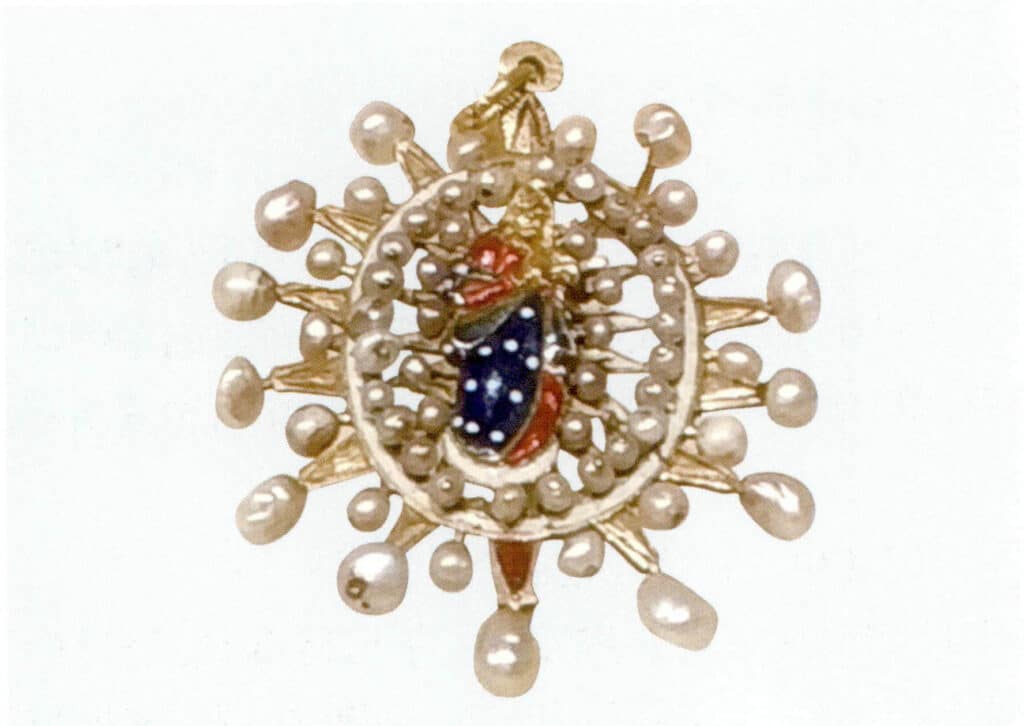
Figure 1-1-12 Natural pearl jewelry in the museum
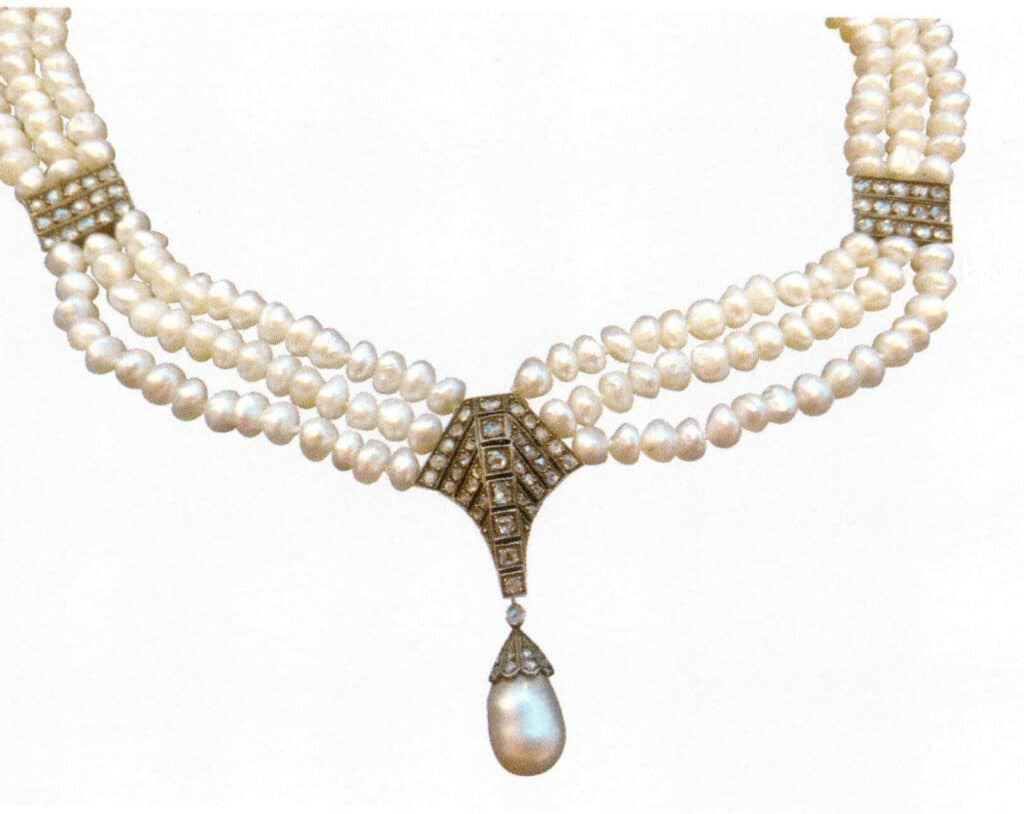
Figure 1-1-16 Antique Pearl Jewelry at the Jewelry Exhibition
(1) Gulf of Mannar
The Gulf of Mannar, located between Sri Lanka and India, has a long history of pearl production and was once known for producing the finest natural seawater pearls in ancient times. The pearls are white or milky white, with green, blue, or purple overtones, and have a strong luster. □
(2) Persian Gulf
Records of pearl fishing in the Persian Gulf date back to 200 BC. The “Pearl of Asia,” found in the Persian Gulf in 1628, ranks as the second-largest natural seawater pearl discovered in the world. The ancient Romans initially obtained pearls from the Persian Gulf. The Roman Emperor Nero had a crown adorned with pearls. Another Roman Emperor, Caligula, had a pearl embedded near his lips and once gifted his horse a pearl necklace.
The natural seawater pearls from the Persian Gulf, known as Persian pearls, are of excellent quality, often cream-colored with a greenish hue.
The pearl diving methods of ancient Persia have been passed down for centuries. Young male slaves would jump from the ship into the sea, holding their breath for several minutes, or use a small device similar to a nose clip to dive to depths of 20-30 m to catch oysters, then return to the ship, repeating the process continuously. The risks of oyster diving are extremely high.
(3) Europe
The pearls produced in European rivers, like those from South America, are favored by various European royal families.
Queen Elizabeth I of England had a particular fondness for pearls, wearing necklaces that reached down to her knees. It is said that Queen Elizabeth had over 3,000 outfits adorned with pearls, but interestingly, a significant portion of the pearls on these garments were imitation pearls.
(4) South Pacific Ocean
The mother-of-pearl in the South Pacific Ocean is large and produces high-quality pearls. Natural pearls from the South Pacific Ocean were exported to Europe around 1845. In 1881, a large silver-lipped shell was discovered in northwest Australia, which can produce high-quality, large natural South Sea pearls.
The mother shells of natural South Sea pearls include silver-lipped shells, gold-lipped shells, and black-lipped shells, which can produce natural pearls in white, gold, and black colors. Natural mother-of-pearl and natural South Sea pearls are shown in Figures 1-1-18 to 1-1-21
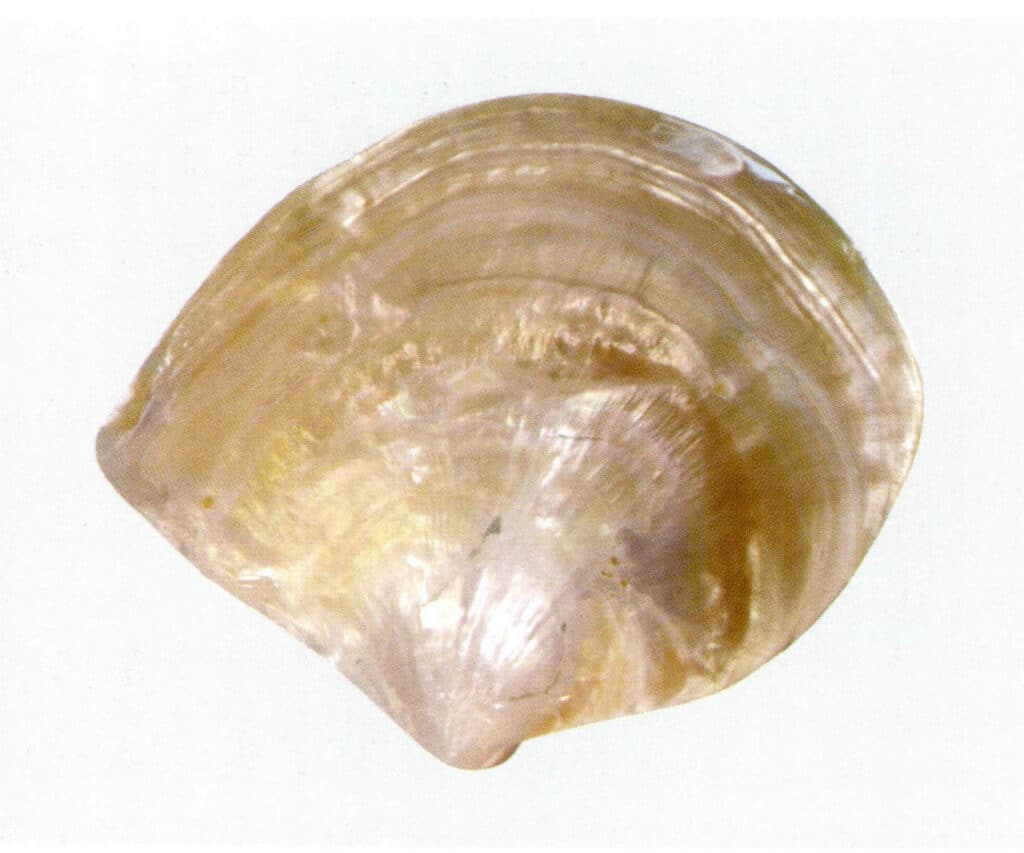
Figure 1-1-18 Outer side of natural gold-lipped shell
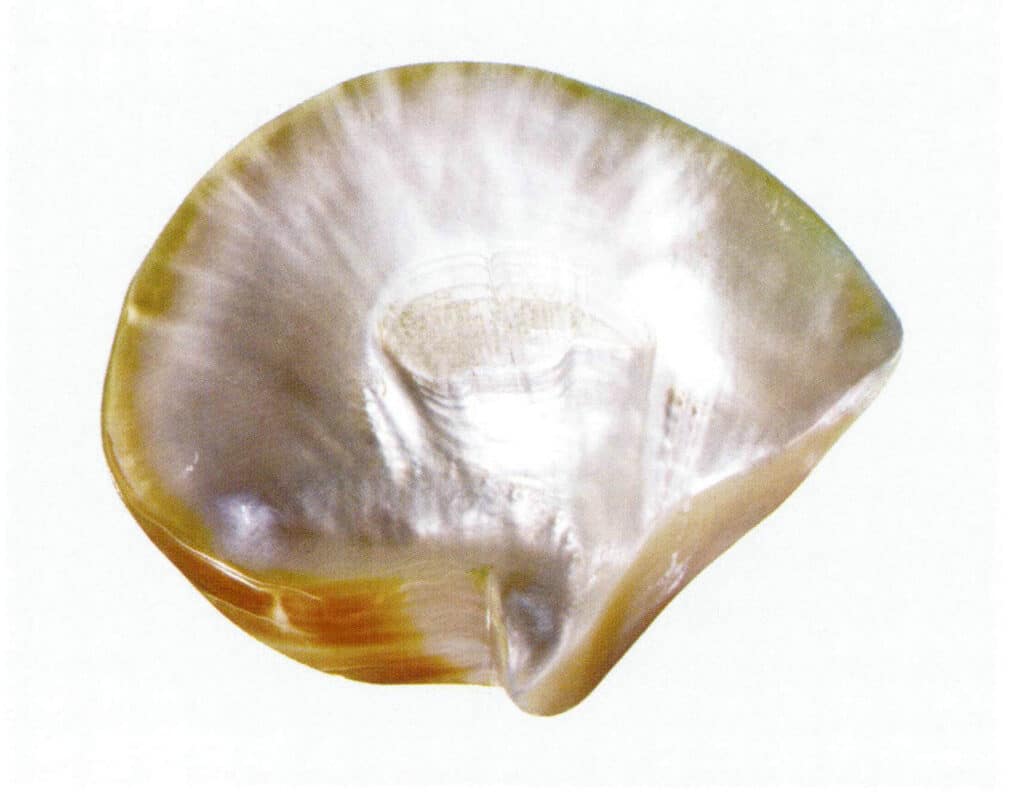
Figure 1-1-19 Inner side of natural gold-lipped shell
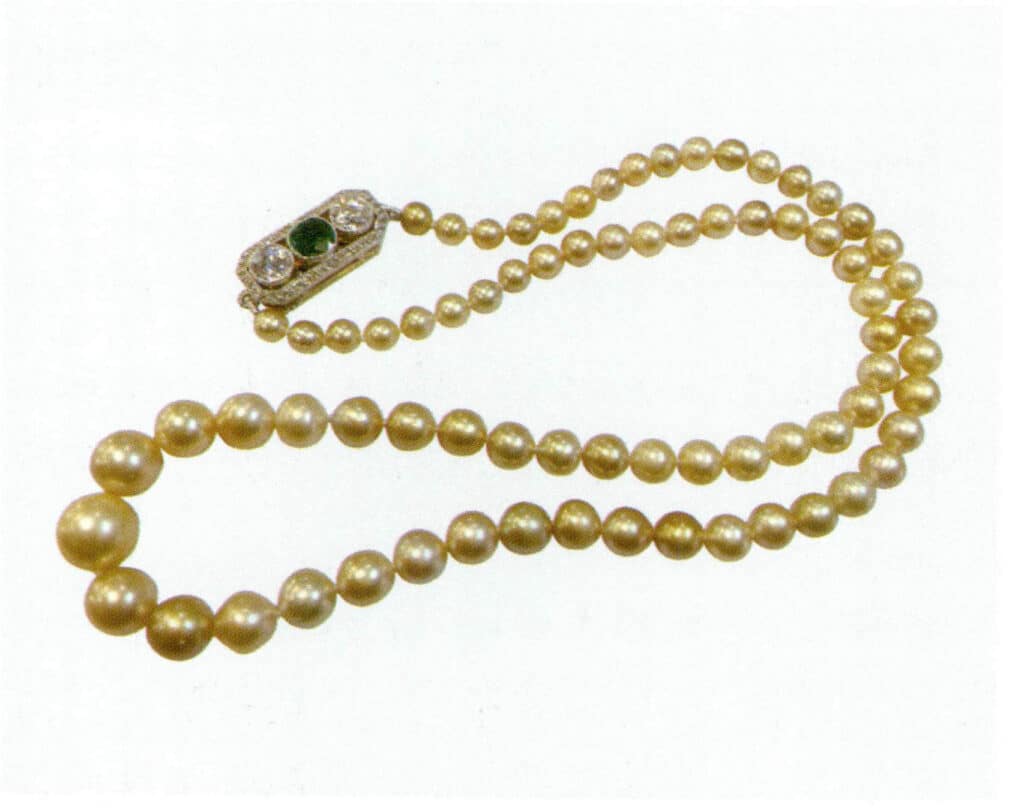
Figure 1-1-20 Golden natural South Sea pearl
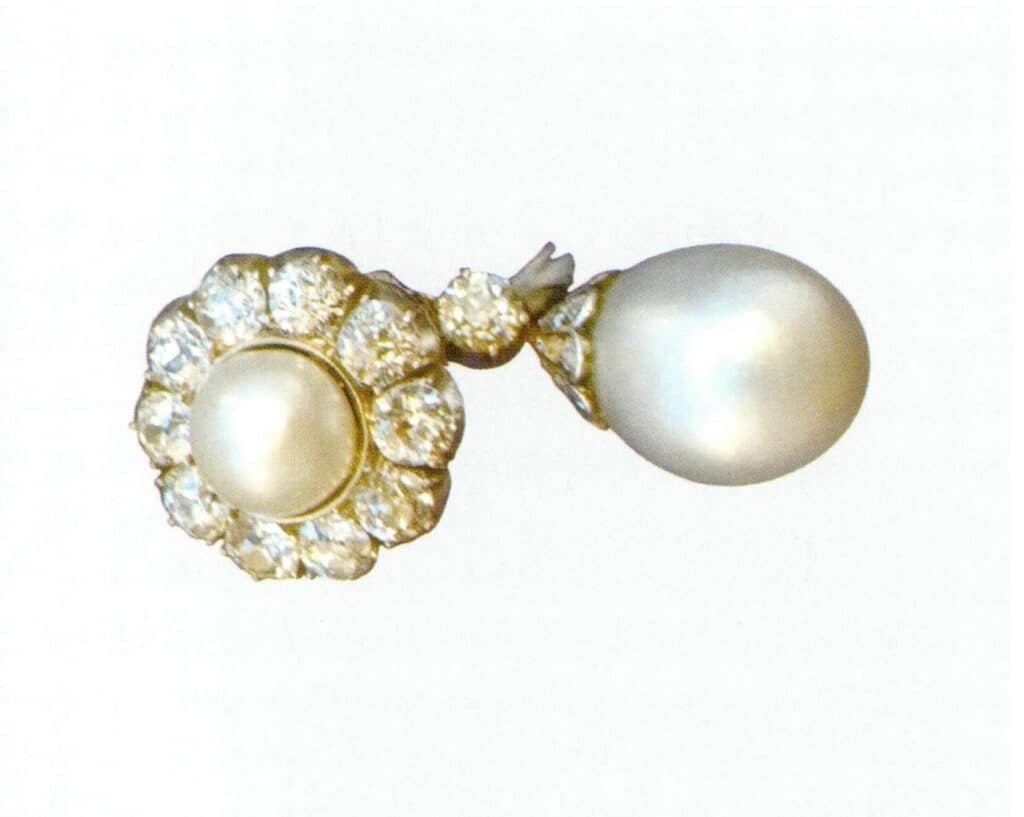
Figure 1-1-21 Silver-white natural South Sea pearl
(5) Americas
In 1498, when Columbus arrived in the Americas for the third time, he successfully discovered pearls. Pearls were listed at the top of the gifts presented to the Spanish king and queen. In the following years, when other Spanish conquerors arrived in the Western Hemisphere, they discovered many pearl-bearing shells near the northern coast of Venezuela, which later became widely known as the “Pearl Coast.” For the next 150 years, almost all the natural pearls produced here were taken to Europe.
Around 1900, the natural freshwater pearl industry in the United States also began to take off, mainly in the Mississippi River, using harvested mother-of-pearl for buttons.
4. Pearl Culture
Pearls have always been regarded as rare treasures, loved and appreciated by people. They represent purity, perfection, nobility, and authority and are on par with jade, comparable to the most precious gemstones. They symbolize noble character, and wearing pearl jewelry enhances one’s charm. Pearls are also the earliest natural materials used as gemstones, thus forming an inseparable bond with Chinese culture, creating a unique pearl culture. The history of pearl culture is long-standing, with records of pearls dating back over 4,000 years. Throughout the long years accompanying humanity, pearls have not only served as material wealth for enjoyment but have also integrated into the cultural river of human history, leaving behind a colorful cultural legacy.
5. Medicinal Functions
Pearls have a special luster and color and have always been highly favored. Pearls also have been a precious traditional Chinese medicine since ancient times.
In modern clinical practice, pearl powder is used internally to treat febrile skin itching and ulcerative conditions, such as chronic eczema and chronic skin ulcer dermatitis; patients after surgery or with mucosal damage taking an appropriate amount of pearl preparations can benefit recovery; pearls have the effects of calming the liver and subduing yang, and clearing vision. Pearl water extract is clinically used to treat visual fatigue, chronic conjunctivitis, and age-related cataracts; both internal and external use of pearl powder can also treat oral ulcers.
Additionally, pearls also have some beauty benefits. Current research also shows that water-soluble pearl calcium (WCP) can effectively inhibit tissue atrophy caused by aging. Current research also shows that water-soluble pearl calcium (WCP) can effectively inhibit tissue atrophy caused by aging
Section V Gemological Characteristics for Pearl
1. Basic Gemological Characteristics
Pearls are the only type of gemstone that can be used directly without cutting or polishing, and their basic properties are shown in Table 1-2-1.
Table 1-2-1 Basic Properties of Pearls
| Main Constituent Minerals | Aragonite, Calcite, Nacre, etc. | |
|---|---|---|
| Chemical composition | (1) Inorganic components: mainly CaCO3, the mass fraction accounted for more than 91%; (2) Organic ingredients: hard protein (conchaolin), the mass fraction of 3.5%-7%; (3) Trace elements: P, Na, K, Mg, Mn, Sr, Cu, Pb, Fe and more than ten kinds; (4) Core: Non-nucleated pearls have a core of the outer mantle of shells, while nucleated pearls often have a core of shell. | |
| Crystalline State | Cryptocrystalline heterogeneous aggregate | |
| Structure | The pearl layer exhibits concentric or concentric radial structure | |
| Optical characteristic | Luster | Pearl luster |
| Color (body color) | (1) Freshwater pearls: white, orange, purple, pink; (2) Seawater pearls: white, golden yellow, gray, black | |
| Shape | (1) Freshwater pearls: round, teardrop, oval, irregular, connected irregular, cabochon, and various other shapes; (2) Seawater pearls: generally round, can have teardrop, oval, irregular, and other shapes | |
| Special optical effects | (1) Accompanying colors: red, green, purple, blue, etc.; white and black pearls are easily observed; (2) Iridescence: floating rainbow colors, the surface of pearls with strong luster is easily observed. | |
| Refractive index | The refractive index of natural pearls is generally [1.530-1.685], while the refractive index of cultured pearls is [1.53-1.56]. | |
| Mechanical characteristic | Mohs hardness | 2.5-4.5 |
| Toughness | High, about 3000 times that of calcite (CaCO3) | |
| Relative density | 2.60 | |
| Special properties | Bubbles when encountering acid; turns brown when overheated; has a sandy feel when rubbed on the surface | |
1.1 Chemical composition
The chemical composition of pearls includes inorganic components, organic components, water, and other substances. The mass fraction of inorganic components accounts for 91% or more, mainly calcium carbonate; it also contains more than a dozen trace elements. The organic components are hydrocarbons, mainly keratin (also known as alpha-keratin or scleroprotein). The mass fraction of organic components accounts for 1.1%-7%.
Using the potassium dichromate volumetric method -dilution heat method, the organic matter content of freshwater cultured pearls with different Luster and colors was tested, and the organic matter content of freshwater cultured pearls was measured to be 1.191%-2.232%, as shown in Table 1-2-2. The specific method uses 1mol/L potassium dichromate solution combined with a concentrated sulfuric acid solution to oxidize the organic matter in the pearl powder, and the remaining potassium dichromate is titrated with ferrous sulfate. The organic carbon and corrected organic matter content are calculated based on the amount of potassium dichromate consumed.
Table 1-2-2 Measurement of organic matter content in freshwater cultured pearls using the dilution heat method (Unit: %)
| Freshwater cultured pearls | White matte | White bright | Light purple | Pink | Orange | Purple |
|---|---|---|---|---|---|---|
| Organic matter content | 11.91 | 15.34 | 17.94 | 18.41 | 20.57 | 22.32 |
The organic substances in pearls are currently believed to be composed of 18 amino acids, including glycine, proline, alanine, valine, serine, aspartic acid, tryptophan, and other amino acids derived from protein hydrolysis, as well as taurine, ornithine, and other amino acids derived from non-protein hydrolysis. Different types, Luster, and colors of freshwater cultured pearls have varying amino acid content. Generally speaking, pearls that are darker in color and have a stronger luster have a higher organic matter content than those with weaker Luster; freshwater cultured pearls are generally lower than seawater cultured pearls. The organic matter content of freshwater cultured pearls with different Luster and colors was tested using acid hydrolysis protein methods, with results shown in Table 1-2-3 and Table 1-2-4. The specific method is as follows: weigh 1mg of each type of sample that has been ground and thoroughly mixed, add 0.5 mL of 6mol/L hydrochloric acid, seal the tube under anaerobic conditions, and at 110℃±1 hydrolyze for 24 hours. The advantage of acid hydrolysis is that it is not prone to racemization of hydrolysis products, but tryptophan is destroyed by boiling acid. An 835-type fully automatic amino acid analyzer was used for amino acid experiments. Due to the destruction of tryptophan and cysteine during hydrolysis, they cannot be detected.
Table 1-2-3 Comparison of amino acid content in cultured pearls (Unit: %)
| Cultivation of Pearls | Amino Acid Content |
|---|---|
| Freshwater Cultivated Pearls | 13.46 ~ 31.39 |
| Seawater Cultivated Pearls | 21.83 ~ 31.70 |
Table 1-2-4 Amino Acid Content of Freshwater Cultivated Pearls by Acid Hydrolysis Protein Method (Unit: %)
| Freshwater cultured pearls | White matte | White bright | Light purple | Pink | Orange | Purple |
|---|---|---|---|---|---|---|
| Total Amino Acids | 13.46 | 18.96 | 14.86 | 23.44 | 21.04 | 16.56 |
Pearls contain more than ten trace elements, such as P, Na, K, Mg, Mn, Sr, Cu, Pb, Fe, and S. The trace element characteristics of cultured pearls are closely related to their growth environment. The environment influences the growth of pearls, and the trace elements contained in seawater and freshwater are different. Generally speaking, trace elements such as Sr, S, Na, Mg, and Fe are relatively enriched in seawater-cultured pearls, while Mn is relatively depleted; in contrast, Mn is relatively enriched in freshwater pearls, while Sr, S, Na, Mg, and Fe are relatively depleted.
1.2 Luster
The pearls produced by bivalve mollusks, commonly called pearls, are characterized by their pearly Luster, as seen in Figures 1-2-1 and 1-2-2. The Luster of pearls is due to the special organic-inorganic layered Structure of the pearl, which results from the reflection, interference, and diffraction of light by the densely arranged calcium carbonate crystals in the pearl layer. The intensity of the pearl luster is related to the smoothness of the pearl’s surface, the arrangement of internal calcium tungsten crystals, the thickness of the pearl layer, and the thickness of each thin layer.

Figure 1-2-1 Pearl Luster
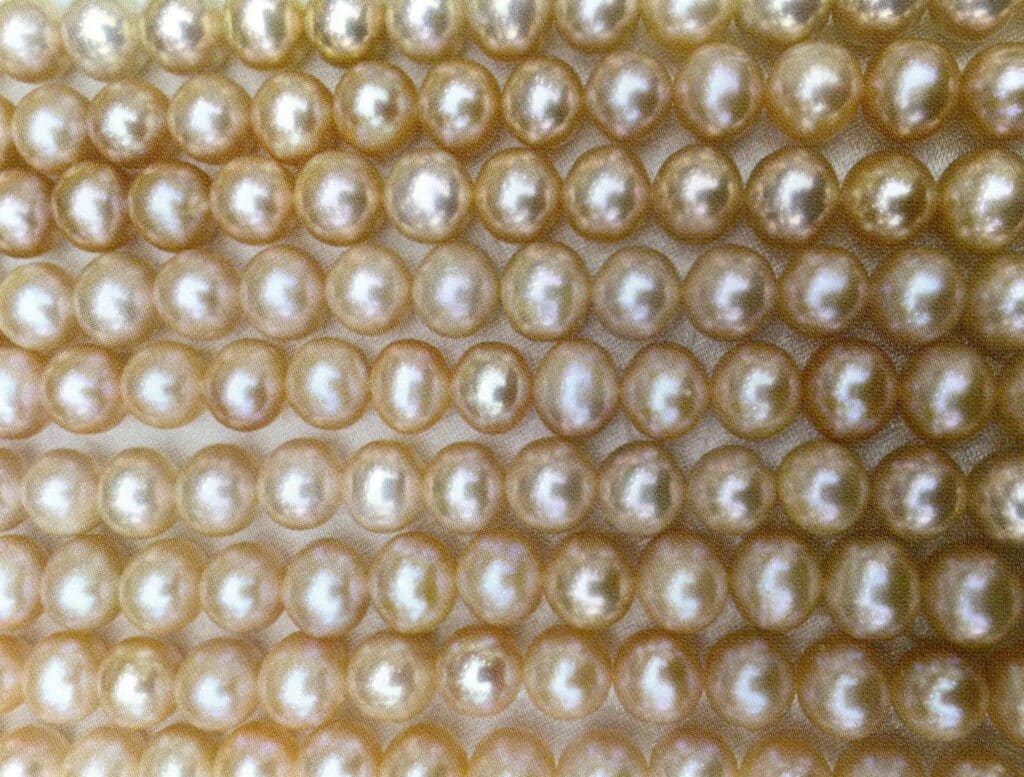
Figure 1-2-2 Pearl Luster
The Luster of pearls is due to the phenomena of reflection, refraction, and diffuse reflection occurring on the surface of the pearl layer when illuminated. Additionally, interference and diffraction effects usually occur between the layers of the pearl. These physical optical phenomena are collectively reflected on the surface of the pearl, forming the unique Luster of pearls.
The principle of pearl luster generation can be explained by Figure 1-2-3. The hard protein layer of freshwater cultured pearls reflects incident light like a mirror. The reflection and refraction of different micro-layers of the pearl, as well as the diffraction slits formed by the gaps where the organic matter between the micro-layers of aragonite is not filled, together create the Luster of the pearl.

1.3 Color
The color of a pearl is the combined result of its body color, overtone, and orientation.
Body color is the color produced by the selective absorption of white light by the pearl itself and can also be considered the fixed hue that the pearl possesses. The overtone and orient of a pearl are mainly caused by its Structure, where the reflected light from the surface and the internal reflected light interfere with each other, along with the diffraction of light caused by the gaps between the layers of the nacre, creating a rainbow-like orientation. When the formed orient is distinctly a color floating over the body color of the cultured pearl, it is referred to as the overtone.
The body color of a pearl mainly depends on the genetics of the mother-of-pearl, meaning that the color of the mother-of-pearl primarily influences the color of the pearl. Different mother-of-pearl species vary in variety, growth environment, etc., resulting in different body colors of the cultivated pearls.
The body color of seawater pearls is mainly white, black, gray, and yellow, as seen in Figures 1-2-4 to 1-2-6.

Figure 1-2-4 Main colors of seawater cultured pearls (1)

Figure 1-2-5 Main colors of seawater cultured pearls (2)

Figure 1-2-6 Main colors of seawater cultured pearls (3)
The body color of freshwater cultured pearls mainly presents four major color systems: white, pink, orange, and purple. Since the majority of consumers does not favor pink, it is generally bleached to white. Currently, the most common colors in the market are mainly white, orange, and purple, as seen in Figures 1-2-7 to 1-2-9.
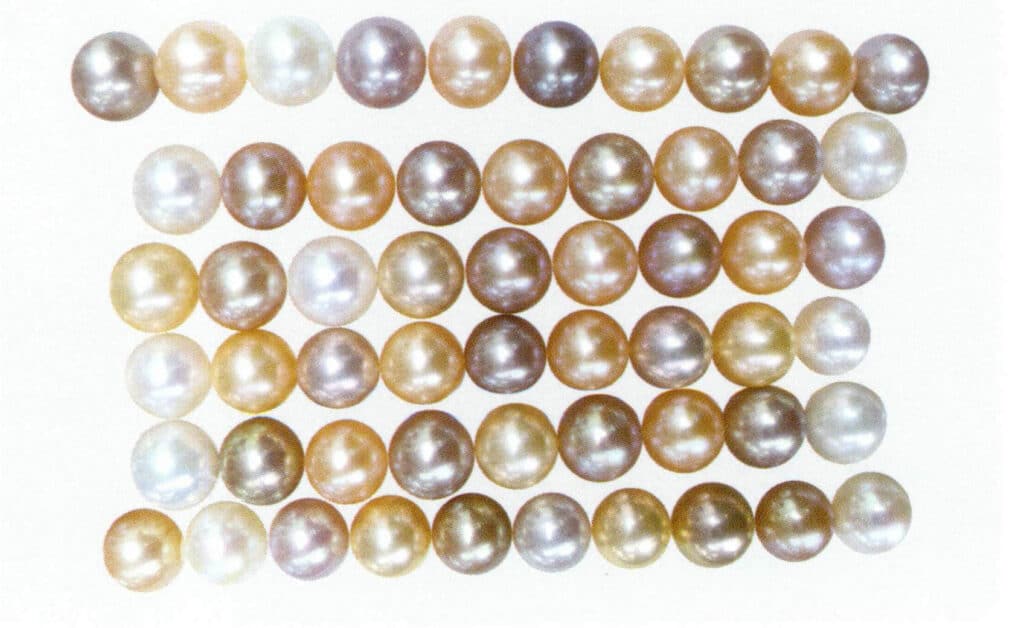
Figure 1-2-7 Main colors of freshwater cultured pearls (1)
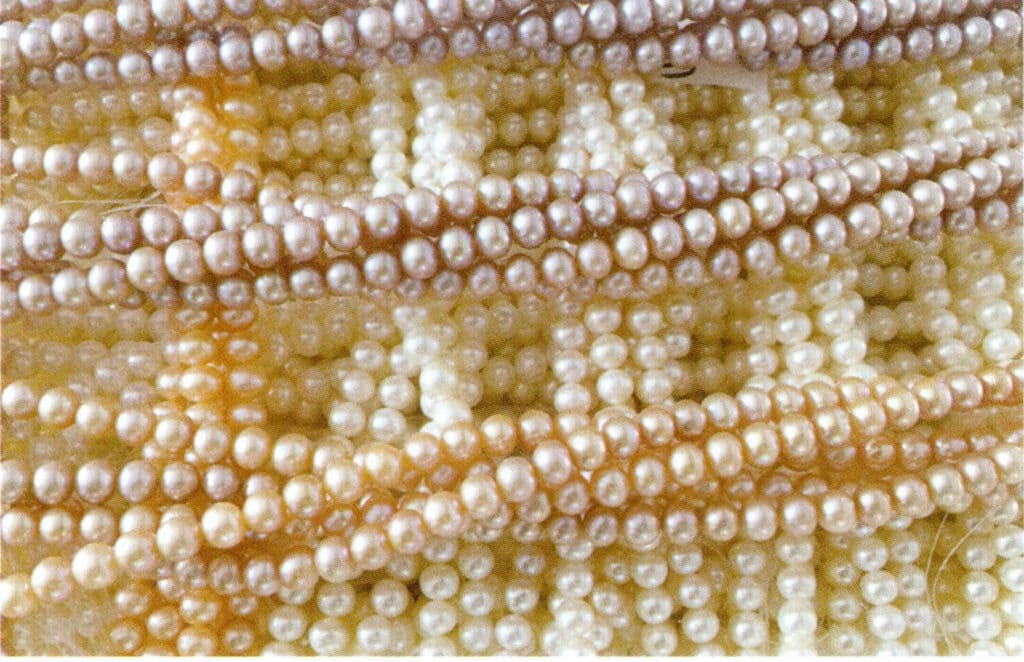
Figure 1-2-8 Main colors of freshwater cultured pearls (2)
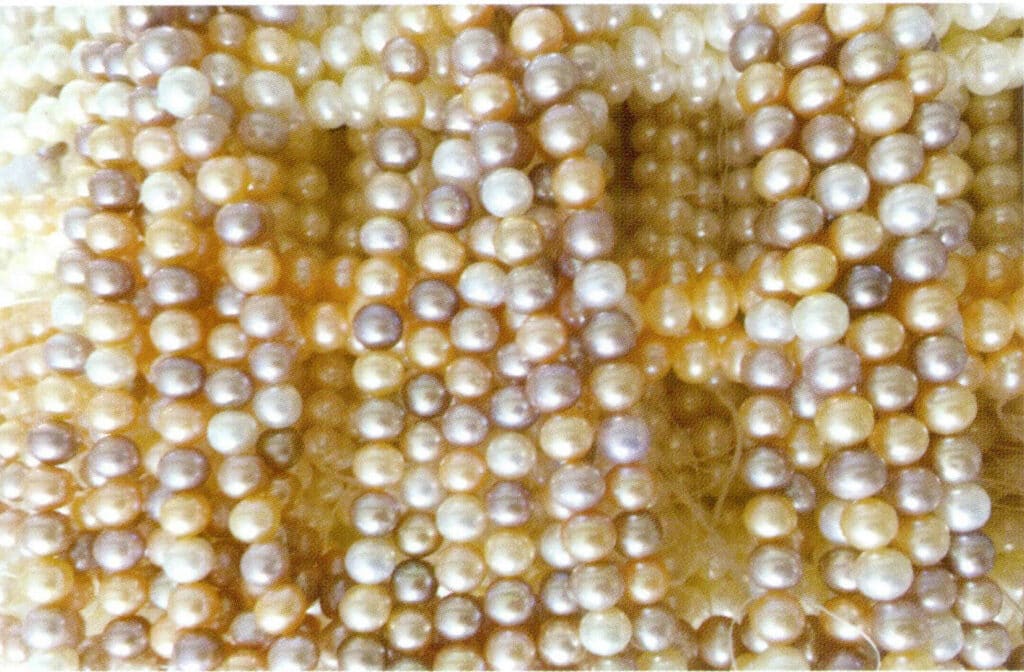
Figure 1-2-9 Main colors of freshwater cultured pearls (3)
Some freshwater cultured pearls may exhibit colors such as bean green, brown, and earth yellow, which can cover the surface of the pearl entirely or partially, as seen in Figures 1-2-10 and 1-2-11.

Figure 1-2-10 Epidermal coloration of freshwater cultured pearls (all covered)
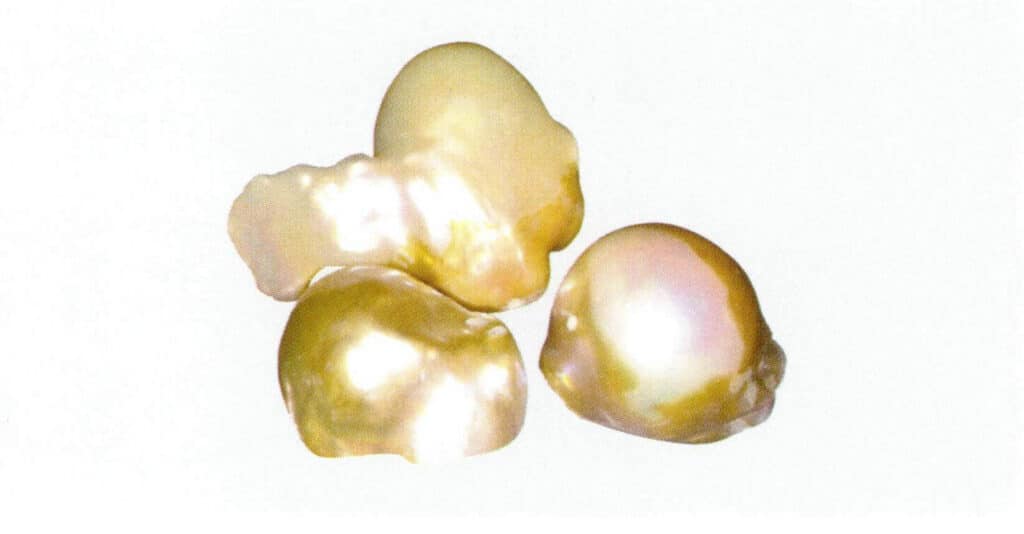
Figure 1-2-11 Freshwater cultured pearls with surface coloration (partially uncovered)
Occasionally, freshwater cultured pearls with nuclei may also show strong Luster in colors like bronze, purple, and brown, as seen in Figures 1-2-12 and 1-2-13.
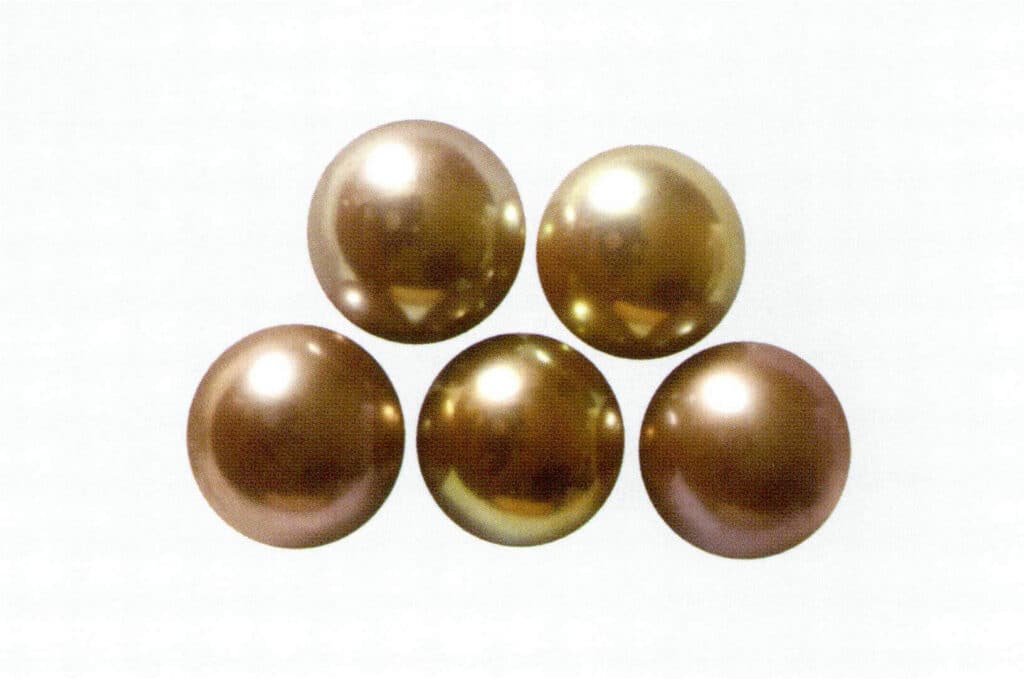
Figure 1-2-12 Freshwater cultured pearls with bronze and purple colors
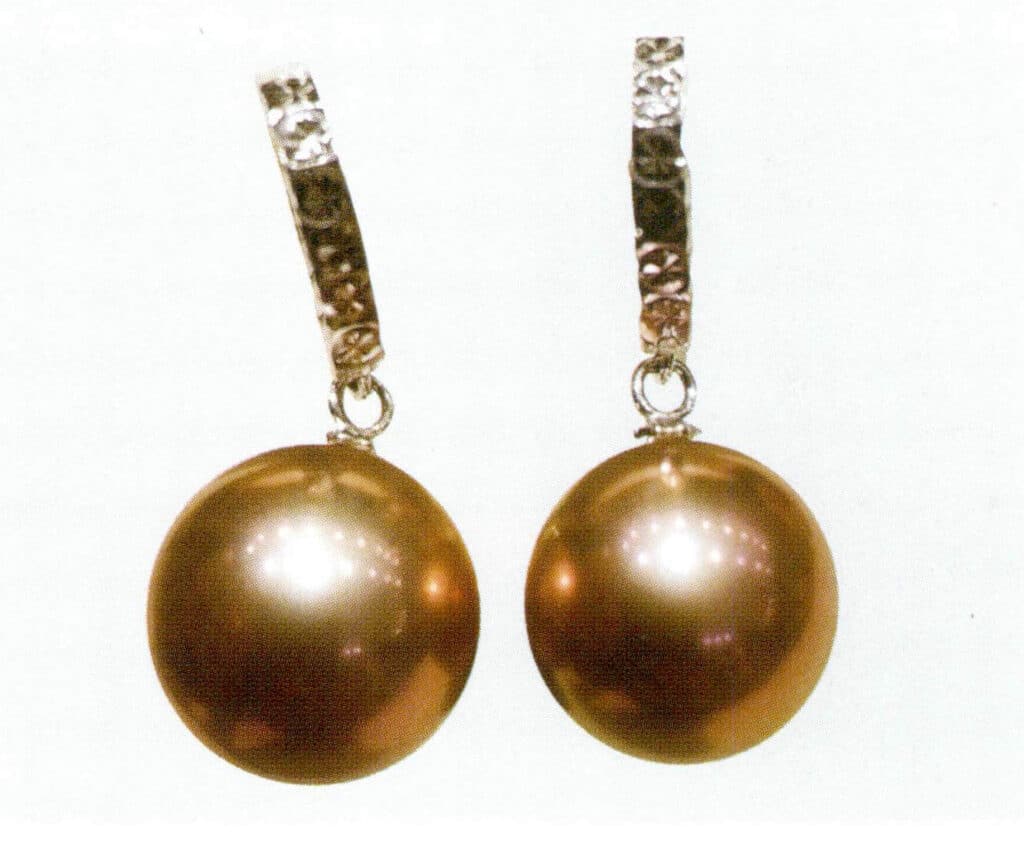
Figure 1-2-13 Brown freshwater nucleated cultured pearls
The accompanying colors are one or several colors that float on the surface of cultured pearls. They are easier to observe when the pearl has a strong luster and a white or black hue, see Figure 1-2-14 to Figure 1-2-19.
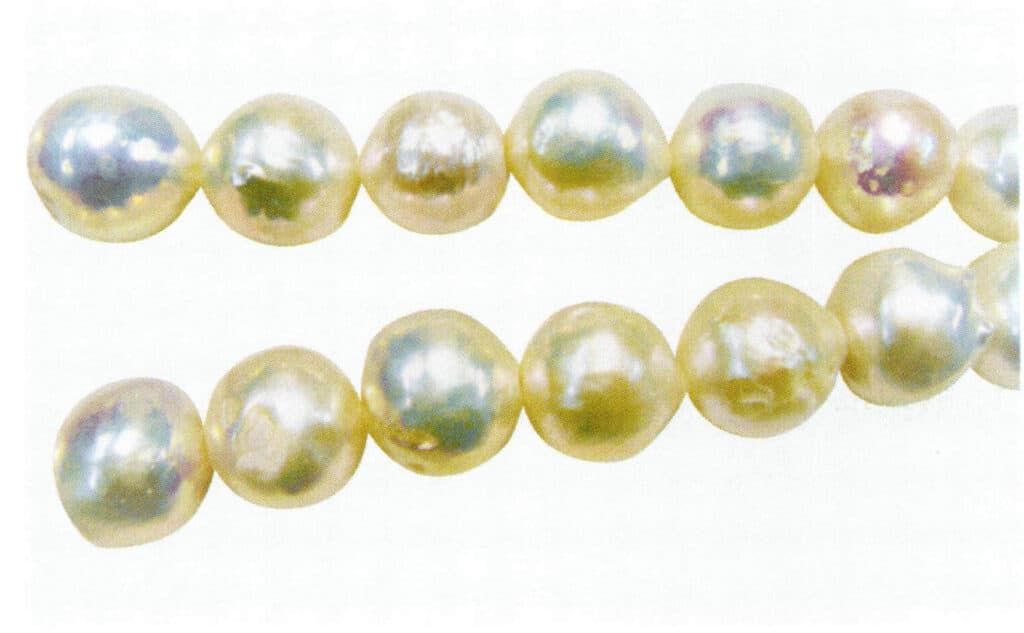
Figure 1-2-14 Accompanying colors of white freshwater cultured pearls (1)
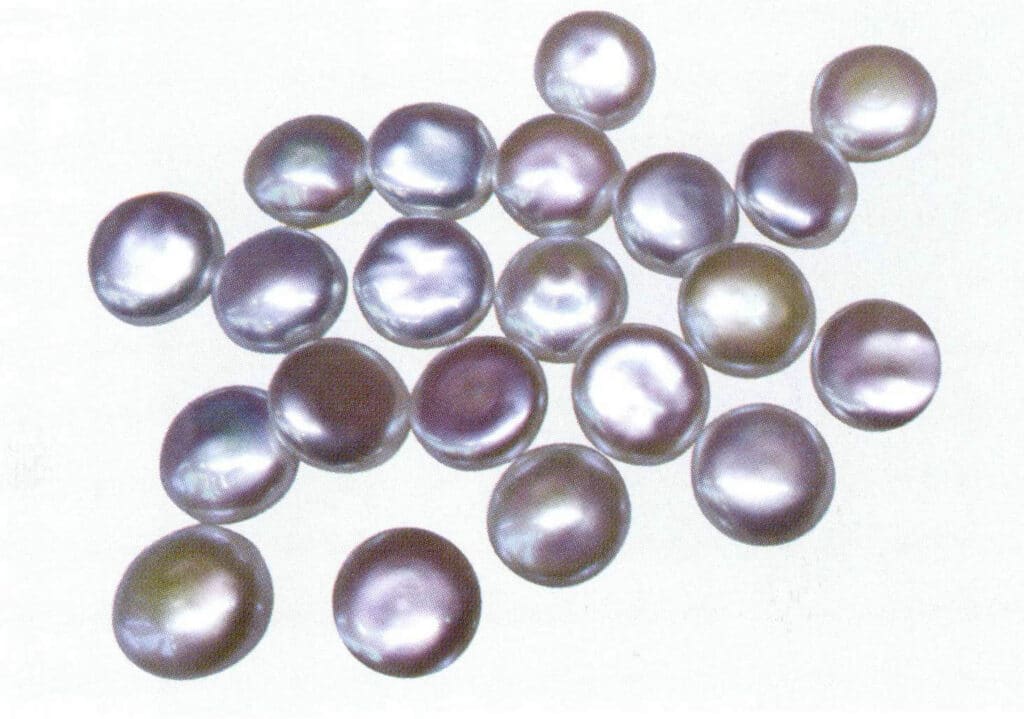
Figure 1-2-15 Accompanying colors of white freshwater cultured pearls (2)
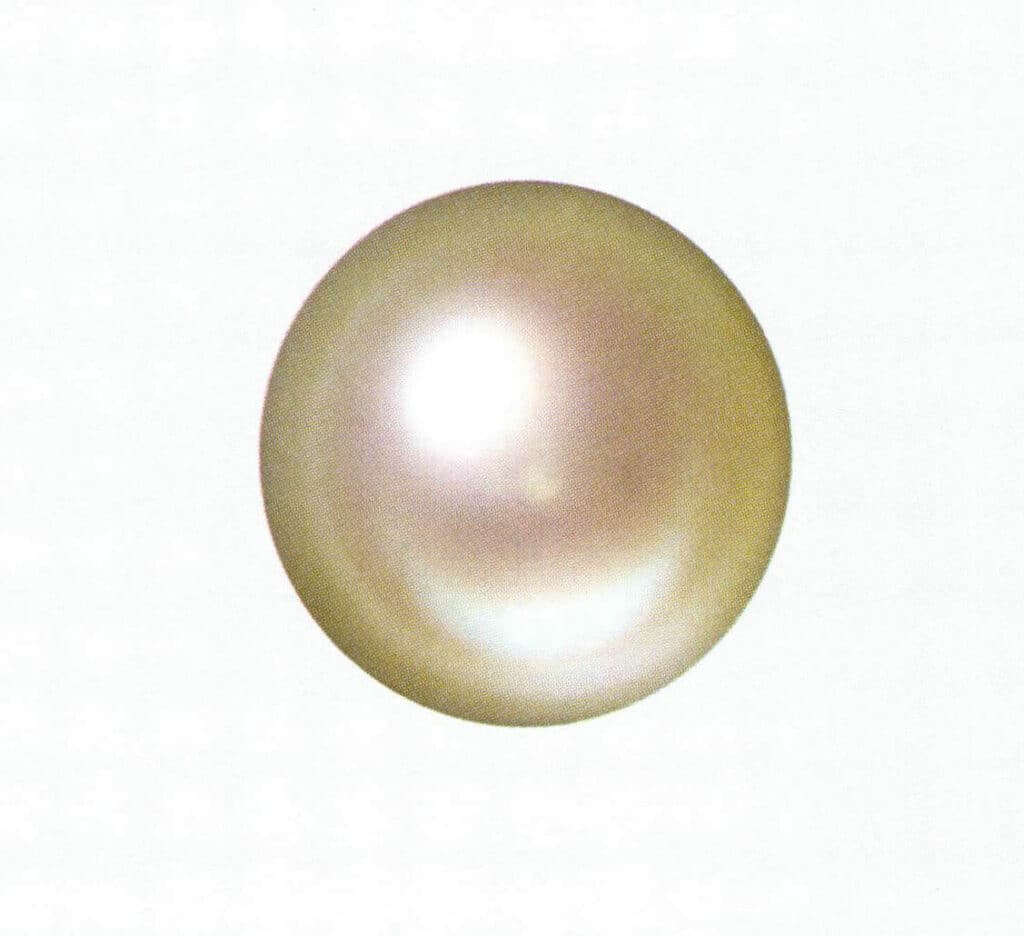
Figure 1-2-16 Accompanying colors of white seawater cultured pearls (1)

Figure 1-2-17 Accompanying colors of white seawater cultured pearls (2)

Figure 1-2-18 Accompanying colors of black seawater cultured pearls (1)
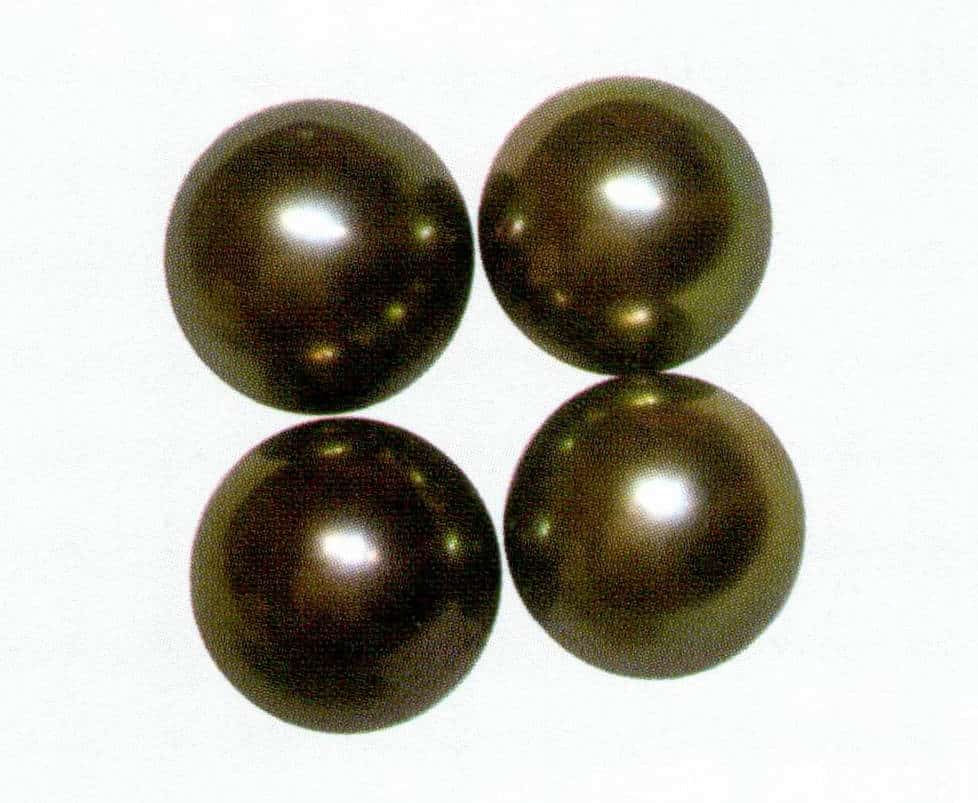
Figure 1-2-19 Accompanying colors of black seawater cultured pearls (2)
Orient is a draftable rainbow color formed on or beneath the surface of the pearl, see Figure 1-2-20 to Figure 1-2-23. Generally, only pearls with strong luster exhibit orient or accompanying colors.
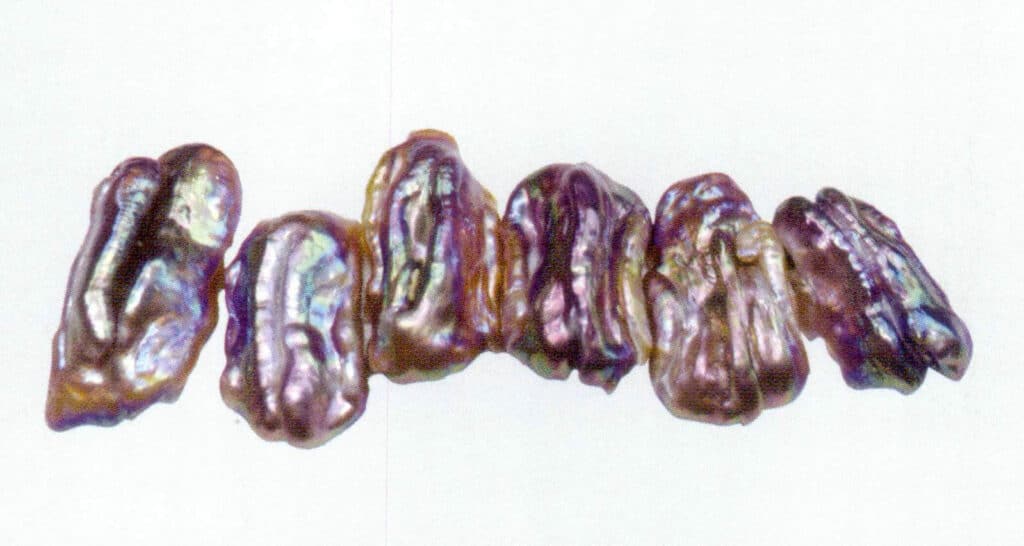
Figure 1-2-20 Luster of freshwater non-nucleated cultured pearls
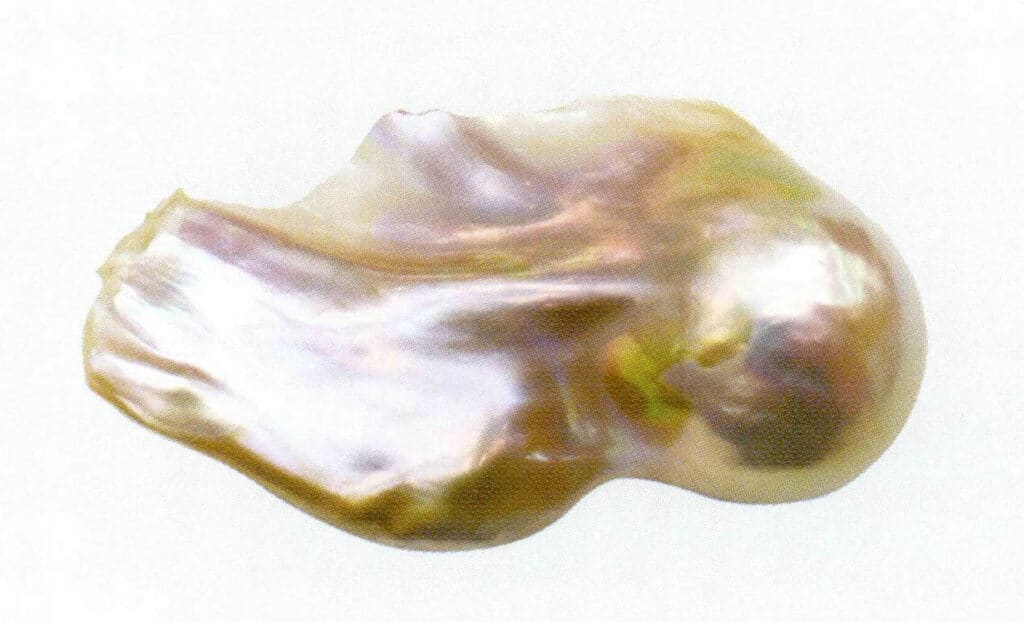
Figure 1-2-21 Luster of freshwater cultured pearls with nucleus (1)

Figure 1-2-22 Luster of freshwater nucleated cultured pearls (2)
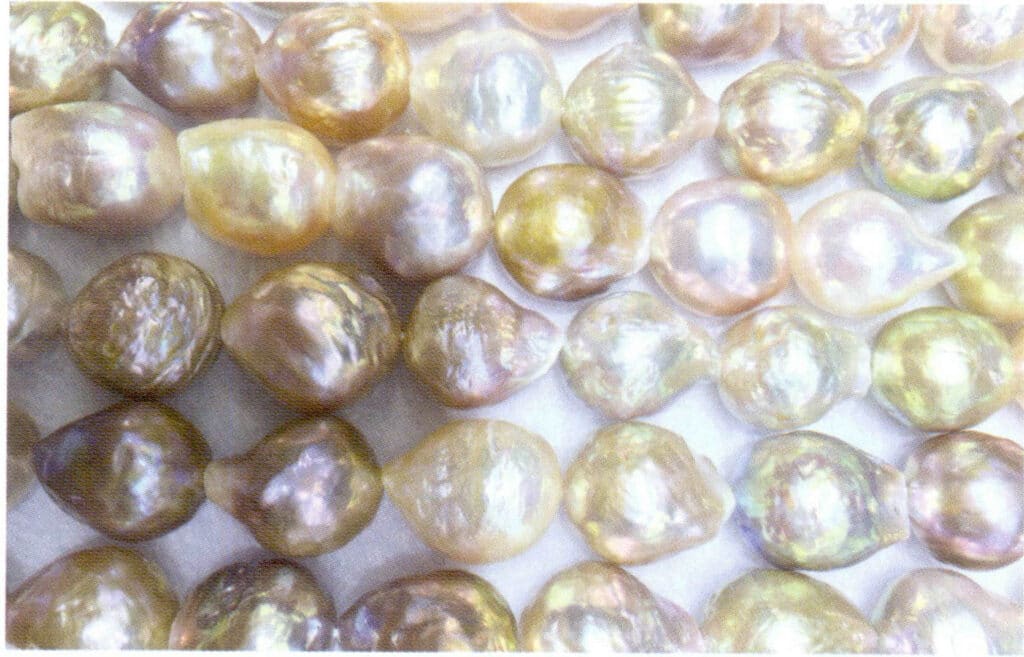
Figure 1-2-23 Luster of freshwater cultured pearls with nucleus (3)
1.4 Shape
The shapes of pearls generally include round types (perfectly round, round, near-round), oval, teardrop, flat round, and irregular shapes.
Freshwater cultured pearls are mainly nucleated, so their shapes vary, including round, teardrop, oval, cabochon, button-shaped, elongated, irregular, and connected irregular shapes, as seen in Figures 1-2-24 to 1-2-31.
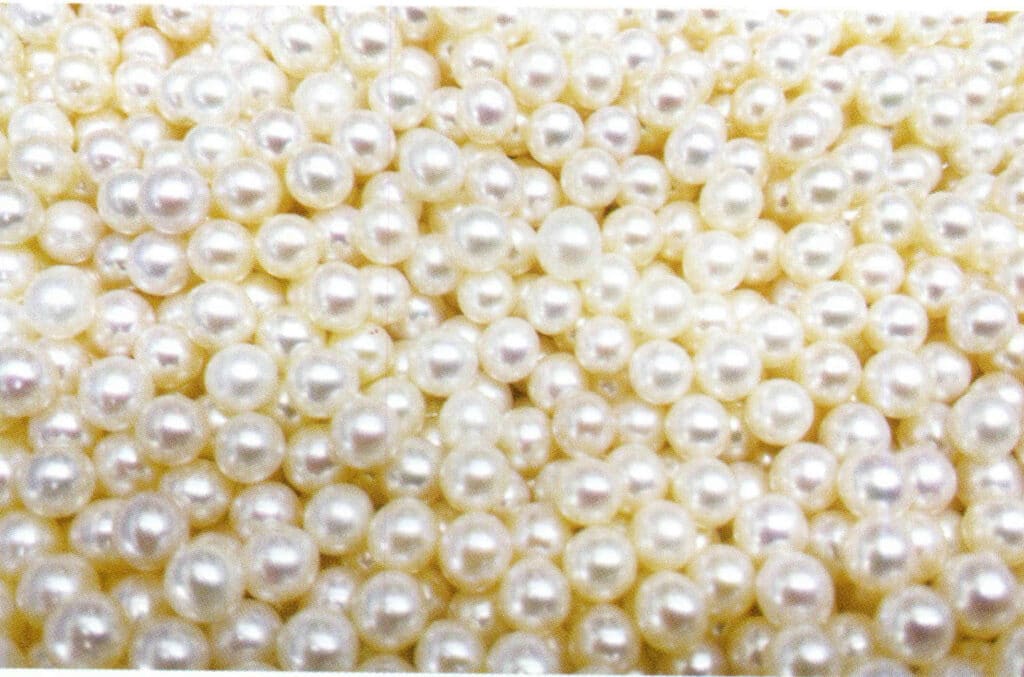
Figure 1-2-24 Round freshwater non-nucleated cultured pearls

Figure 1-2-25 Near-round and oval freshwater non-nucleated cultured pearls

Figure 1-2-26 Oval freshwater non-nucleated cultured pearls (1 )
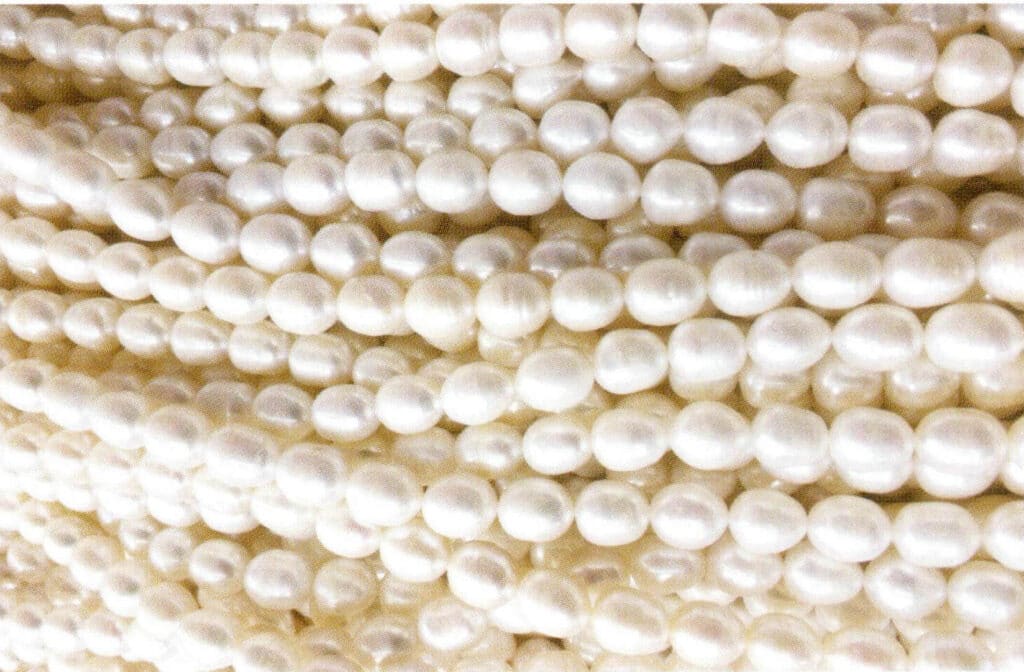
Figure 1-2-27 Oval freshwater nucleated pearl (2)

Figure 1-2-28 Steamed bun-shaped and abacus-shaped freshwater non-nucleated cultured pearls
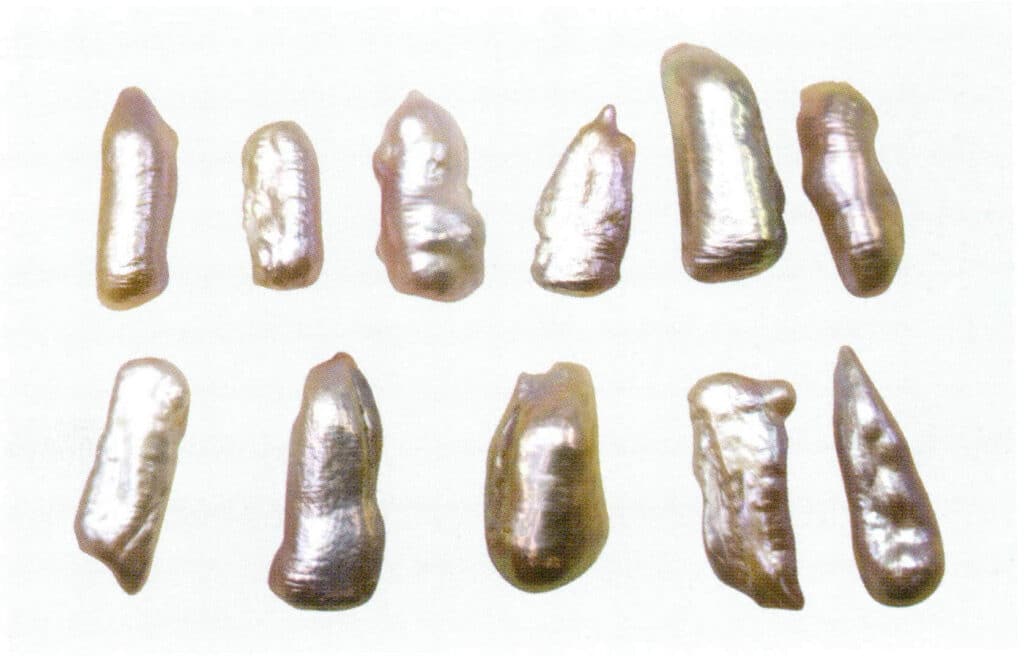
Figure 1-2-29 Elongated freshwater nucleated pearl
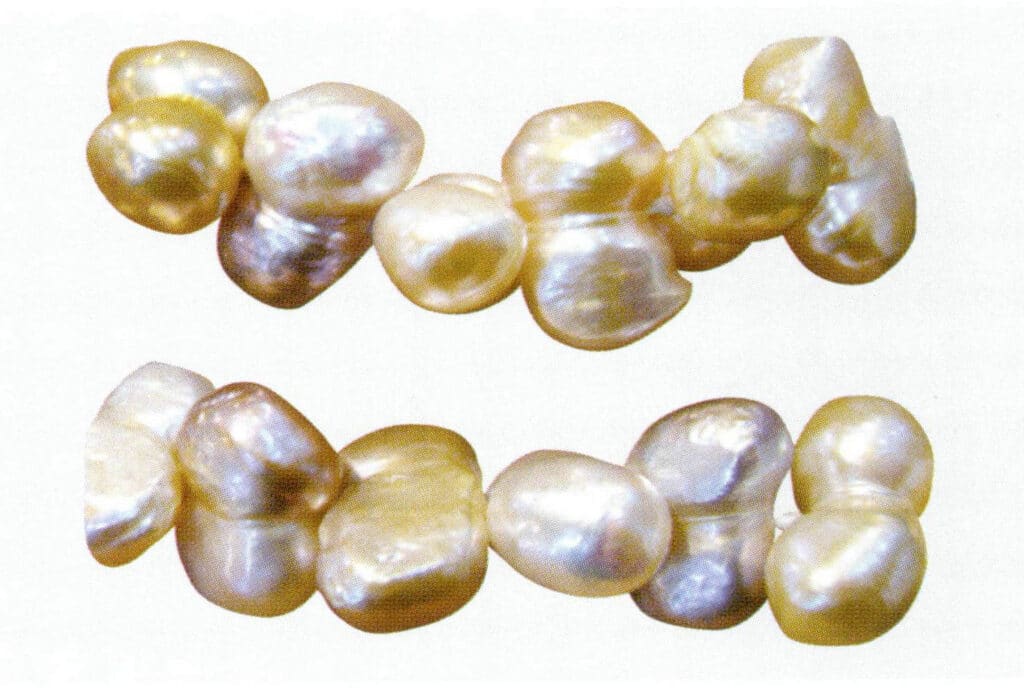
Figure 1-2-30 Connected freshwater nucleated pearl (1)
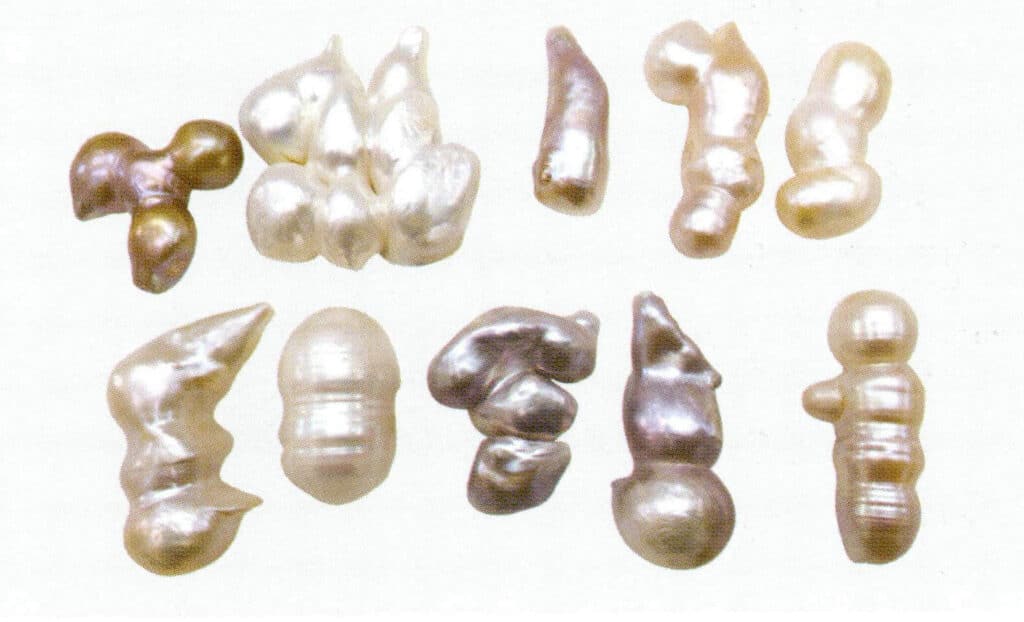
Figure 1-2-31 Connected freshwater nucleated pearl (2)
Freshwater pearls with a nucleus can be round or near-round, as seen in Figures 1-2-32 and 1-2-33;
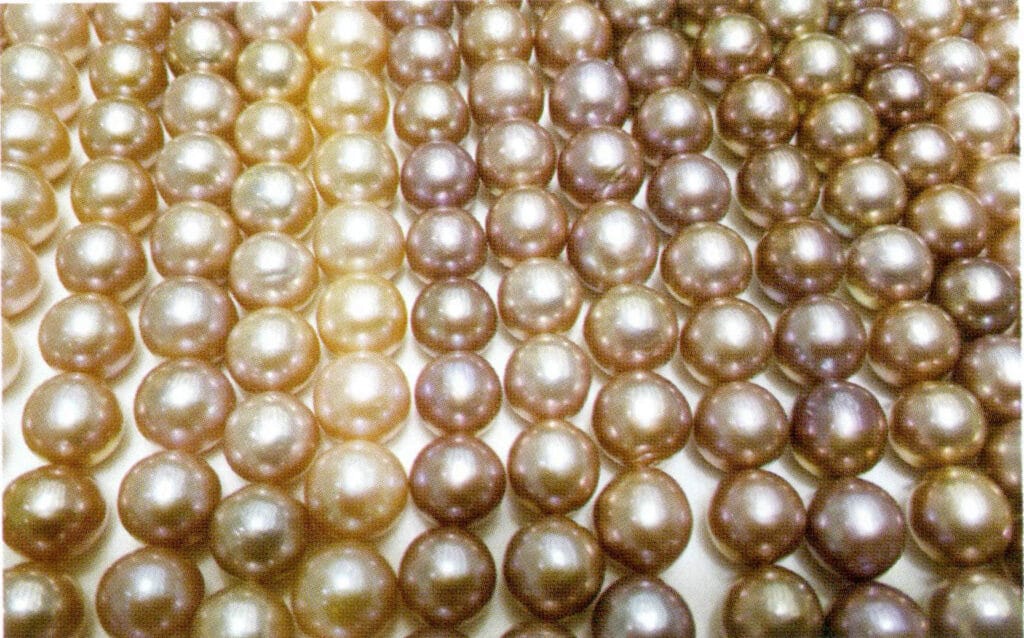
Figure 1-2-32 Round freshwater nucleated pearl

Figure 1-2-33 Near-round freshwater cultured pearls
Copywrite @ Sobling.Jewelry — Custom jewelry manufacturer, OEM and ODM jewelry factory
however, a considerable portion of nucleated cultured pearls, even when implanted with a round nucleus, do not appear round, often having small pointed protrusions resembling “tails,” appearing as comma symbol, as seen in Figure 1-2-34 .there are also some that vary based on the shape of the implanted nucleus, such as button-shaped, diamond-shaped, etc.

Seawater cultured pearls are nucleated, and the pearl layer grows around a round shell, so they are generally round or near-round, Figure 1-2-35 Common round and near-round seawater cultured pearls. However, when the pearl layer reaches a some thickness, shapes such as teardrop, fat round, and irregular can also appear.
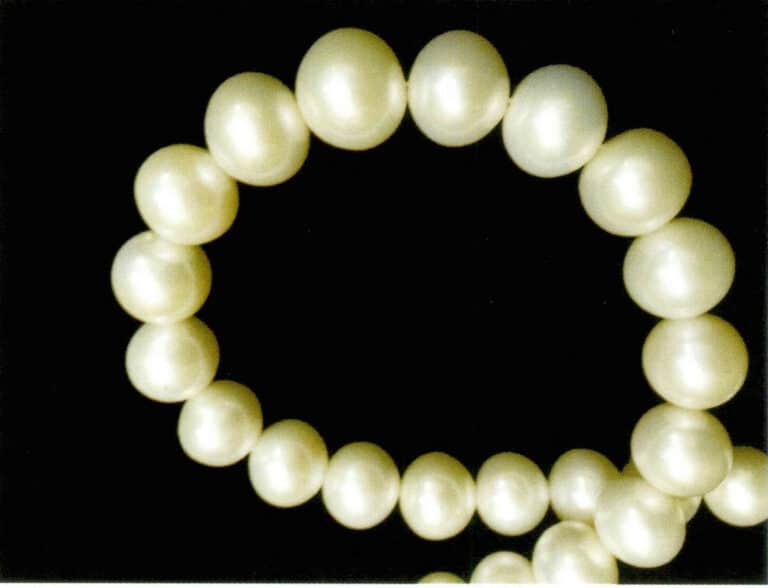
1.5 Ultraviolet fluorescence characteristics
Observed using a gem ultraviolet fluorescence instrument, freshwater cultured pearls exhibit no to moderate yellow and green fluorescence under long-wave ultraviolet light, with some showing strong blue fluorescence; they generally do not emit light under short-wave ultraviolet. The fluorescence of the cut surface is generally stronger than the surface’s, allowing for a clearer observation of the banded distribution of the pearl layers.
Seawater-cultivated pearls have relatively high Fe and low Mn, with Fe being a quencher of ultraviolet fluorescence and Mn being an activator. Therefore, the ultraviolet fluorescence of seawater-cultivated pearls is generally weaker than that of freshwater-cultivated pearls.
Suppose cultivated pearls undergo a coating process similar to solid fluorescence whitening. In that case, they generally emit a strong blue-white fluorescence, making it impossible to discern their original fluorescence color, as seen in Figures 1-2-36 and 1-2-37.
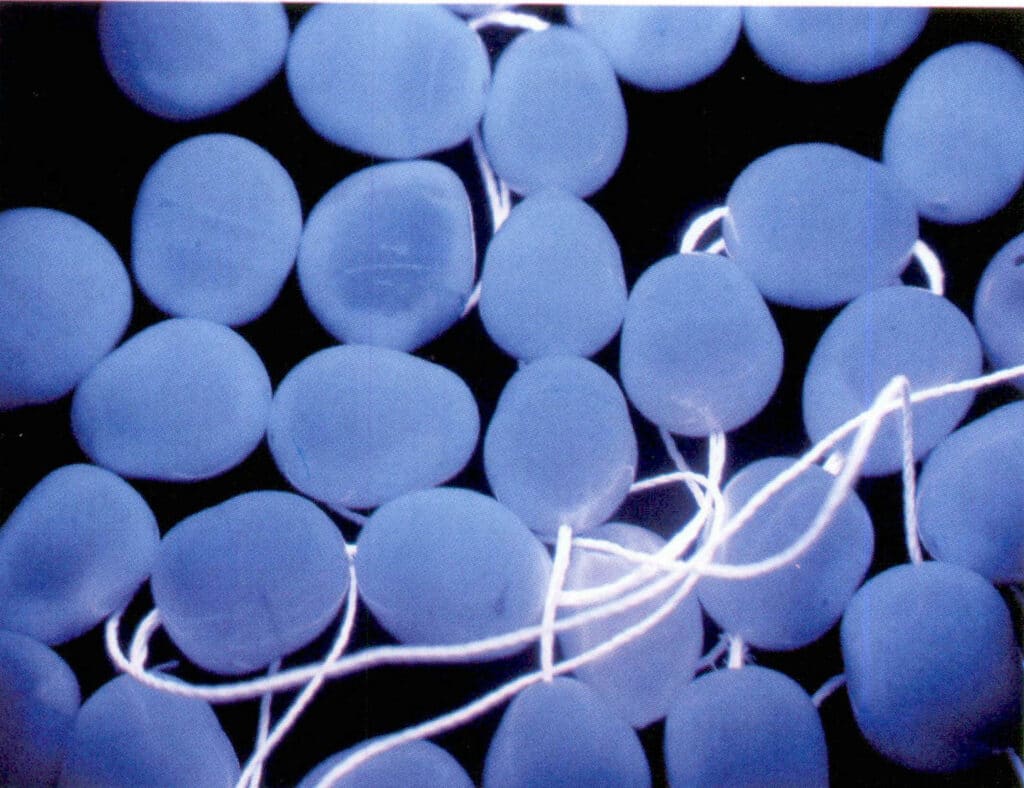
Figure 1-2-36 Freshwater cultured pearls whitened by light (under ultraviolet long wave)
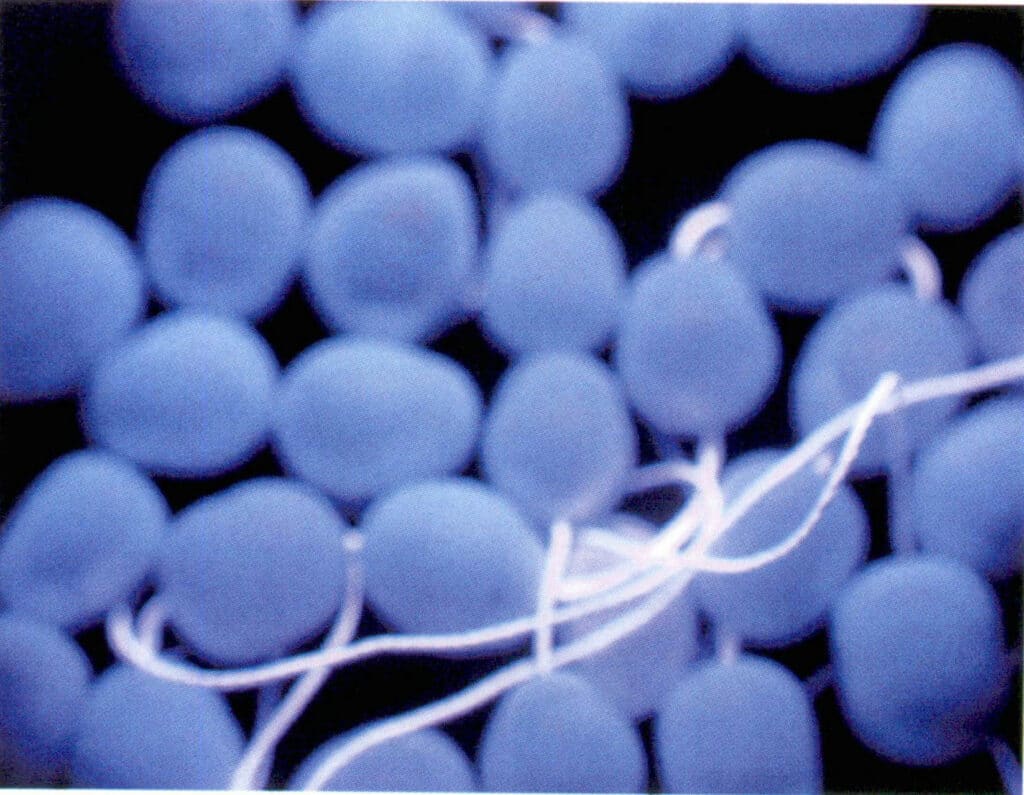
Figure 1-2-37 Freshwater cultured pearls whitened by light (under ultraviolet short wave)
1.6 Density
The content of various components determines the density of pearls. Pearls of different types, origins, and formations have slight differences in density, and pearls of different qualities also have slightly different densities.
Generally, the density of natural seawater pearls is 2.61-2.85 g/cm3, the density of natural freshwater pearls is 2.66-2.78 g/cm3, rarely exceeding 2.74 g/cm3; seawater-cultivated pearls generally have a higher density due to the shell nucleus, which is 2.72-2.78 g/cm3; the density of freshwater-cultivated pearls is lower than that of most natural freshwater pearls and seawater-cultivated pearls.
1.7 Hardness and Toughness
The Mohs hardness of natural pearls is 2.5-4.5, while the Mohs hardness of cultured pearls is 2.5-4.
The pearl layer is tough and can withstand significant plastic deformation before breaking. Its tensile modulus is 64 GPa, bending strength is 130 MPa, and fracture work is 600-1240 J/m, with its bending strength being close to that of alumina ceramics and its fracture work being two orders of magnitude higher than that of alumina ceramics (7J/m2).
The high toughness of the pearl layer is closely related to the layered combination of aragonite with alternating soft and hard interfaces in the organic matrix. Its toughening mechanisms include crack deflection, fiber pullout, and organic matrix bridging. Among these, crack deflection is the most common phenomenon of crack propagation, especially when cracks propagate perpendicular to the aragonite layers. Cracks first extend a distance along the organic layers between the aragonite sheets, then deflect, passing through the aragonite layer and deflecting again into another organic layer parallel to it, thereby increasing the required fracture work and the resistance to propagation. Although nacre is an aggregate of aragonite, its platelets are generally a few micrometers in size. They are arranged staggered, bonding the crystals by a relatively softer organic matrix. When the pearl layer is subjected to external pressure, cracks first initiate in the organic layers and extend along the polygonal boundaries of the aragonite crystals or pass through the organic layers of the aragonite into adjacent organic layers that are parallel to it. Cracks tend to exhibit a step-like shape with clear and regular patterns. The organic matter can coordinate the sliding between the layers or be stretched or compressed under some conditions. Still, it remains connected to the aragonite layers, allowing the pearl layer to easily adjust deformation through interlayer sliding, reducing the impact of external forces and making it less prone to cracking.
1.8 Surface Features
The surface of a pearl may have natural growth marks such as flaws, spots, and parallel ring-like growth textures, including pits, dull white spots, and ring-like blemishes. The surface of nucleated pearls may also exhibit wrinkles and damage to the pearl layer
The surface characteristics of pearls are shown in Figures 1-2-38 to 1-2-51.

Figure 1-2-38 Pit
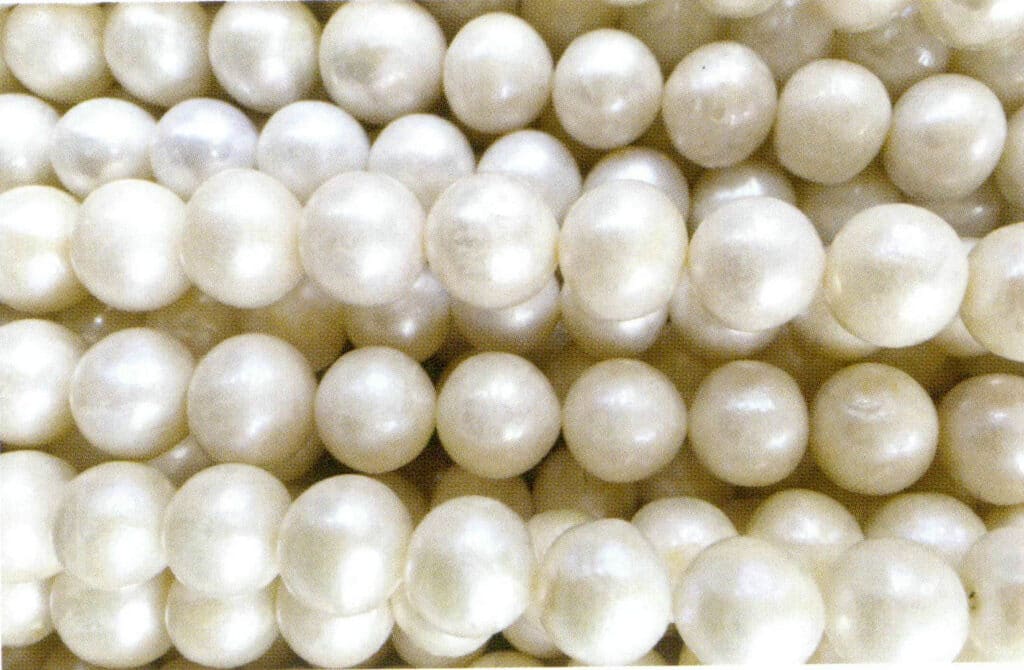
Figure 1-2-39 No light spots
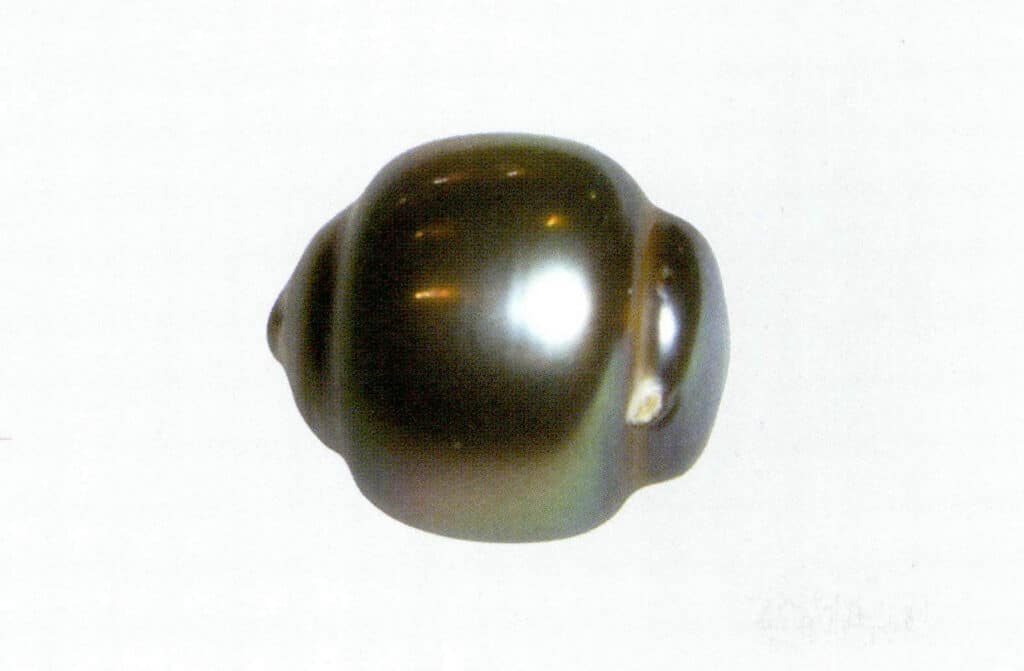
Figure 1-2-40 No light spots and annular bands

Figure 1-2-41 Pits and Rings (1)
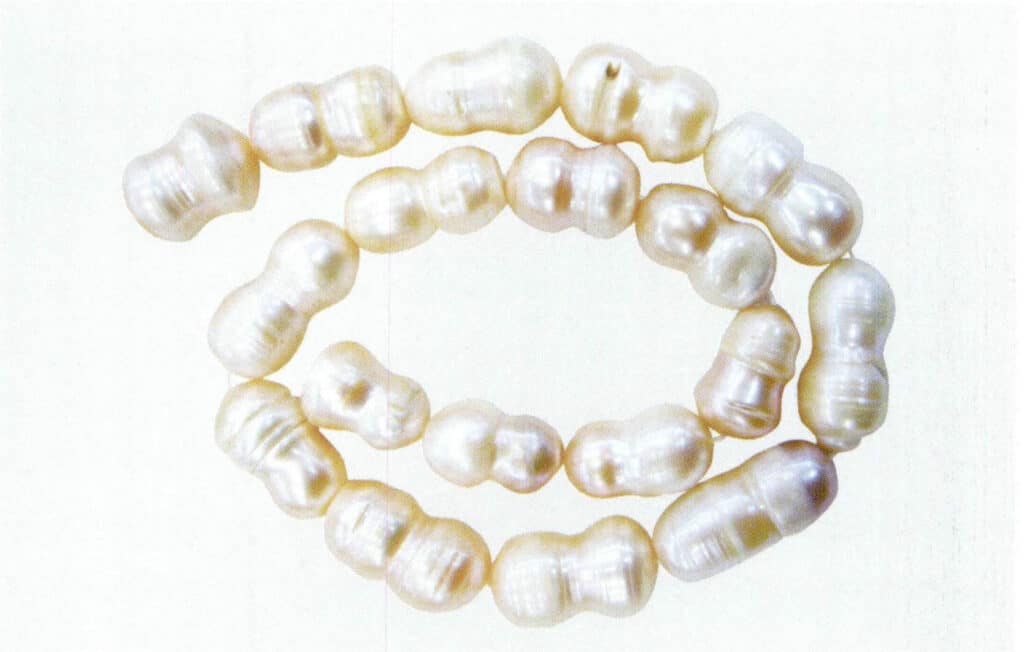
Figure 1-2-42 Pits and Rings (II)
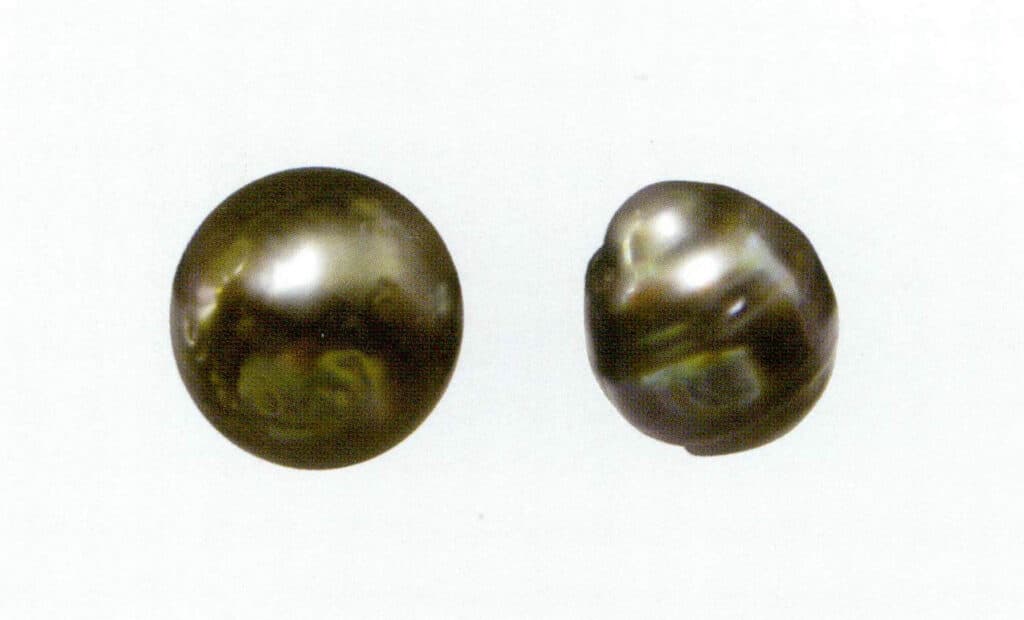
Figure 1-2-43 Pits and Rings (Three)
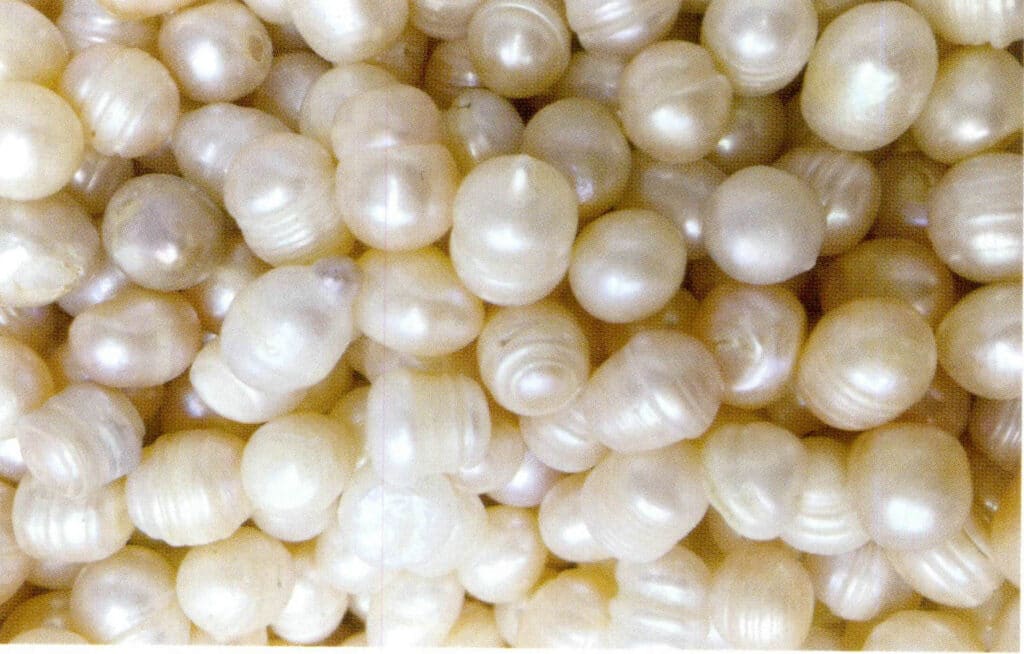
Figure 1-2-44 Ring Belt (I)
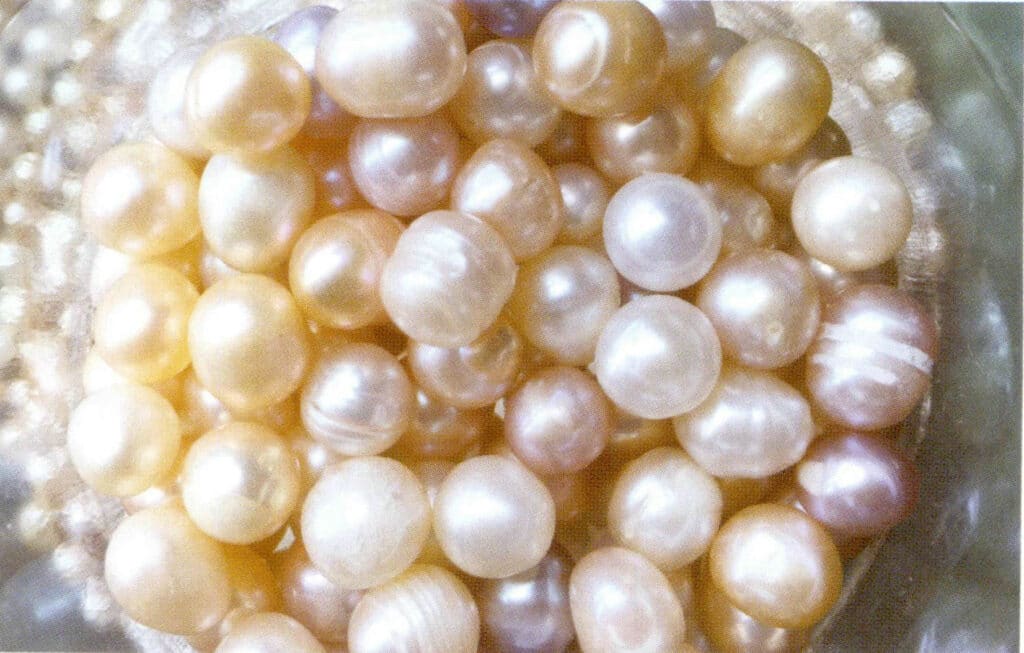
Figure 1-2-45 Ring Belt (II)

Figure 1-2-46 Protrusions, Pits, and Rings (I)
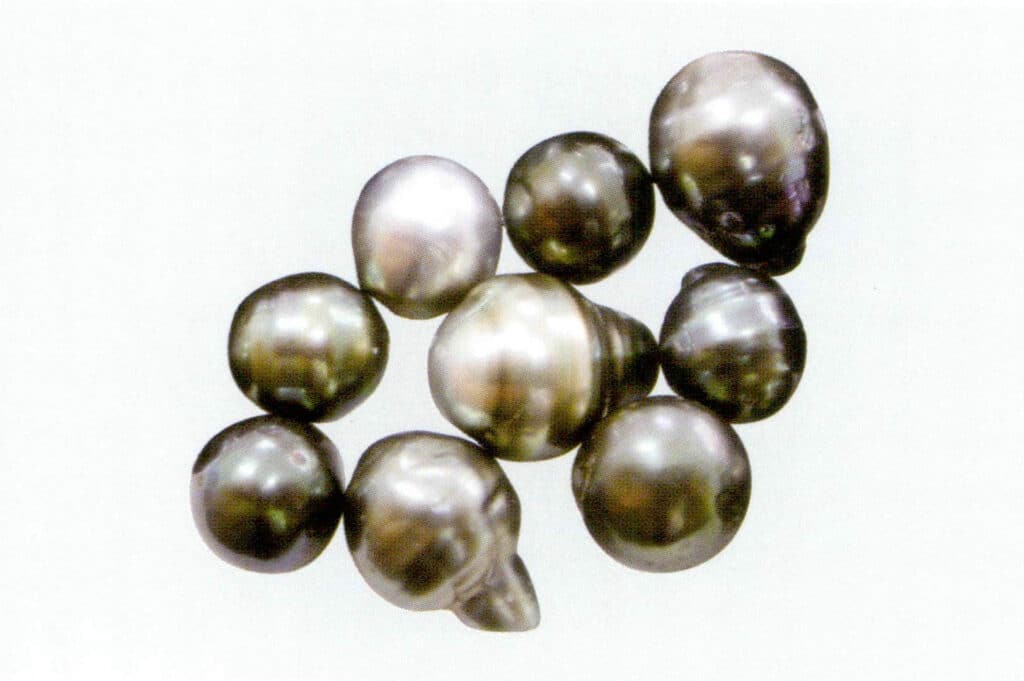
Figure 1-2-47 Protrusions, Pits, and Rings (II)
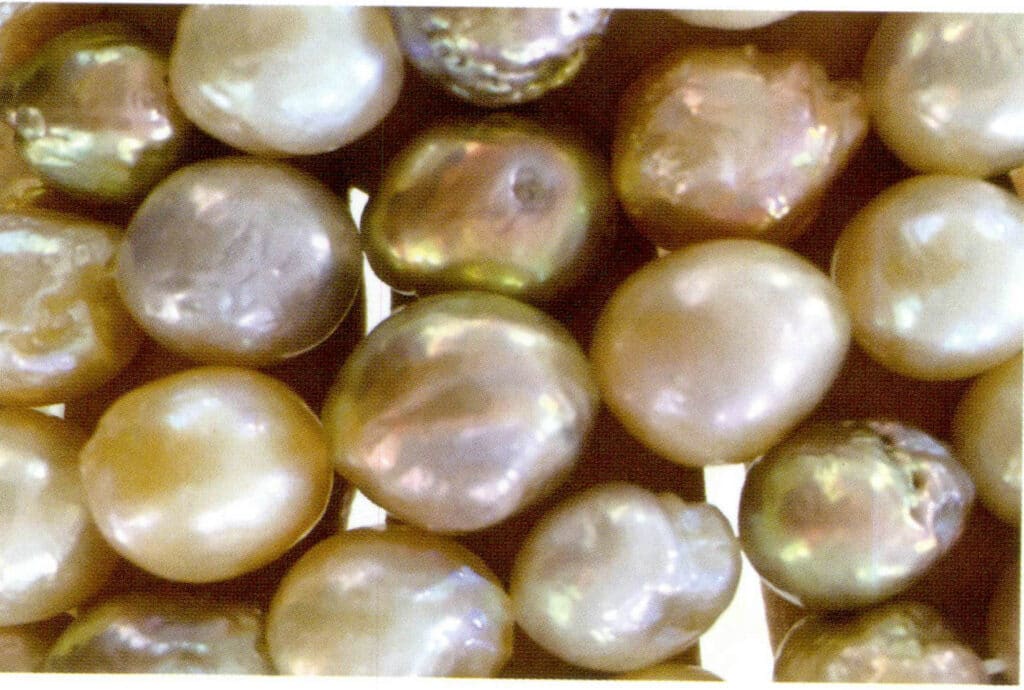
Figure 1-2-48 Wrinkling of the pearl layer (freshwater cultured pearls with nuclei)
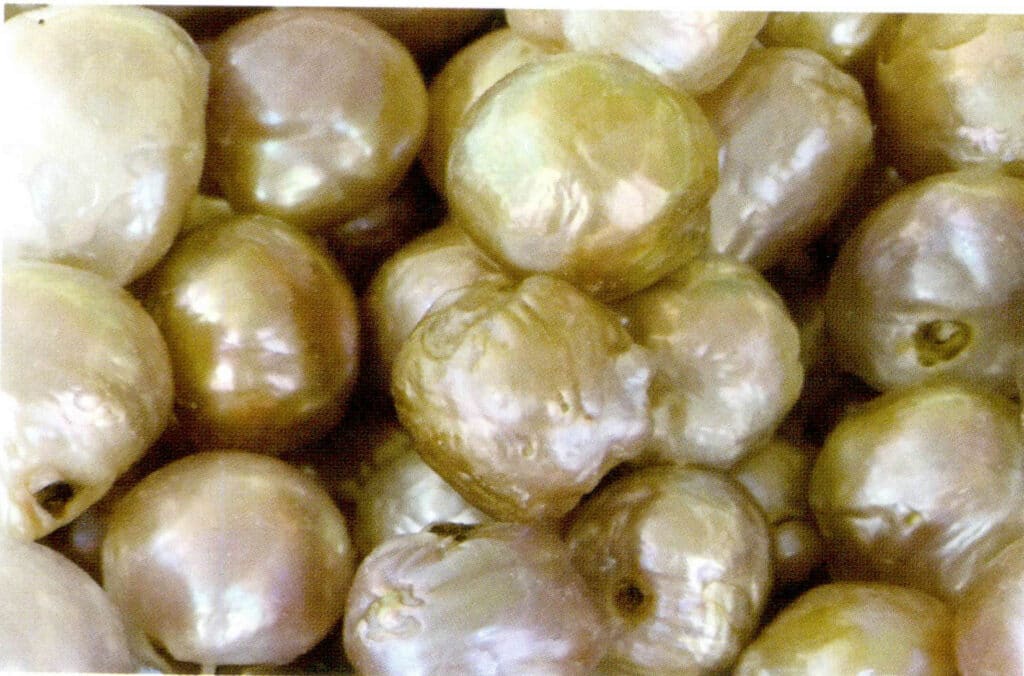
Figure 1-2-49 Wrinkling and damage of the pearl layer (freshwater nucleated cultured pearls)

Figure 1-2-50 Damage to the pearl layer and the ring band
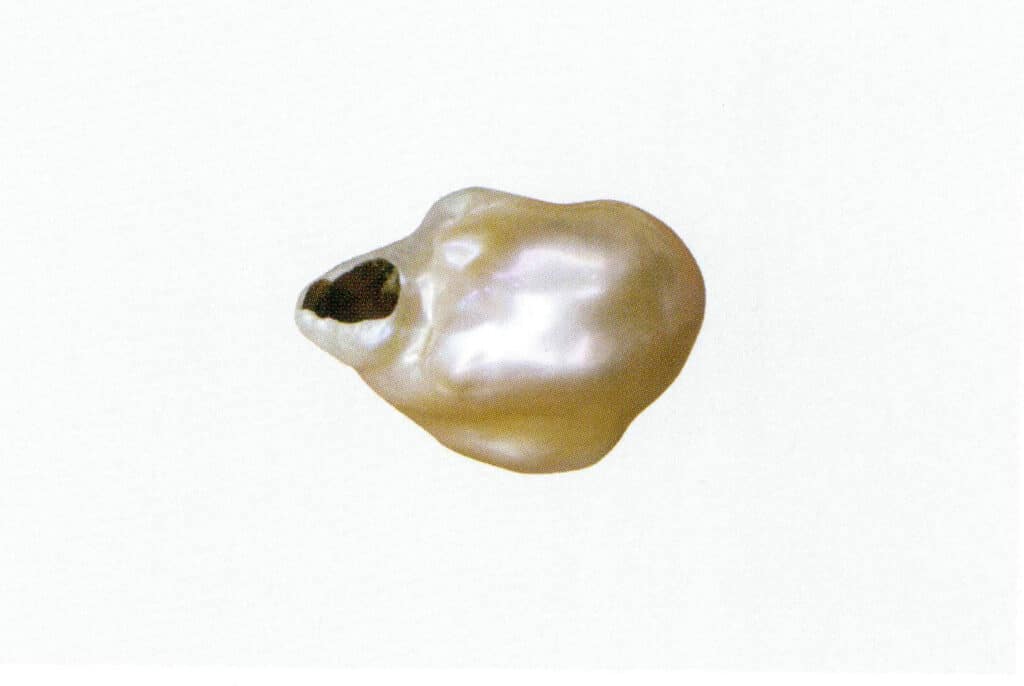
Figure 1-2-51 Damage to the pearl layer
A pit refers to small depressions or pits on the surface of the pearl layer that are lower than other areas, which generally have an iridescent luster.
White non-lustrous spots refer to small spots without pearlescent Luster that appear on the pearl layer. Whether it is a white pearl or a colored pearl, the non-lustrous spots on its surface are white, which is also one of the important characteristics for identifying whether the color of the pearl is natural. Large areas of non-lustrous spots may also appear in some freshwater cultured pearls.
Swirling patterns, commonly known as “screw patterns,” are surface growth patterns similar to screw threads, and the growth textures can take various forms, including parallel lines, concentric layers, fishtail shapes, whirlpool shapes, and irregular stripes.
1.9 Microscopic Observation
Under magnification, the surface of the pearl layer is generally smooth and delicate, and it may also have a concentric radiating layered structure and various surface growth defects and textures, with the layered Structure forming textures similar to contour lines on a map. Observing from the drilled hole of a cultured pearl, the pearl nucleus and the layered growth structure of the pearl layer can be seen, while it is not easy to observe in non-nucleated pearls are shown in Figures 1-2-52 to 1-2-55.

Figure 1-2-52 Microscopic observation of non-nucleated pearls

Figure 1-2-53 "Contour line" texture of the pearl layer
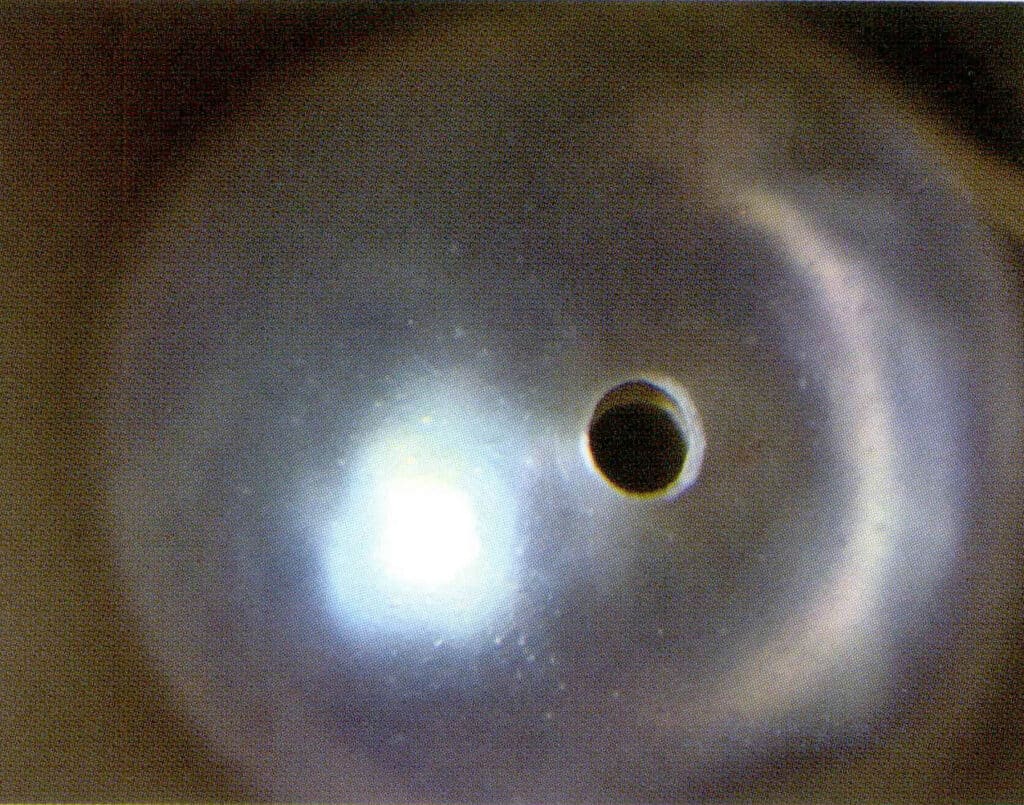
Figure 1-2-54 Microscopic observation of the drilled area of nucleated cultured pearls showing the pearl nucleus and layered structure
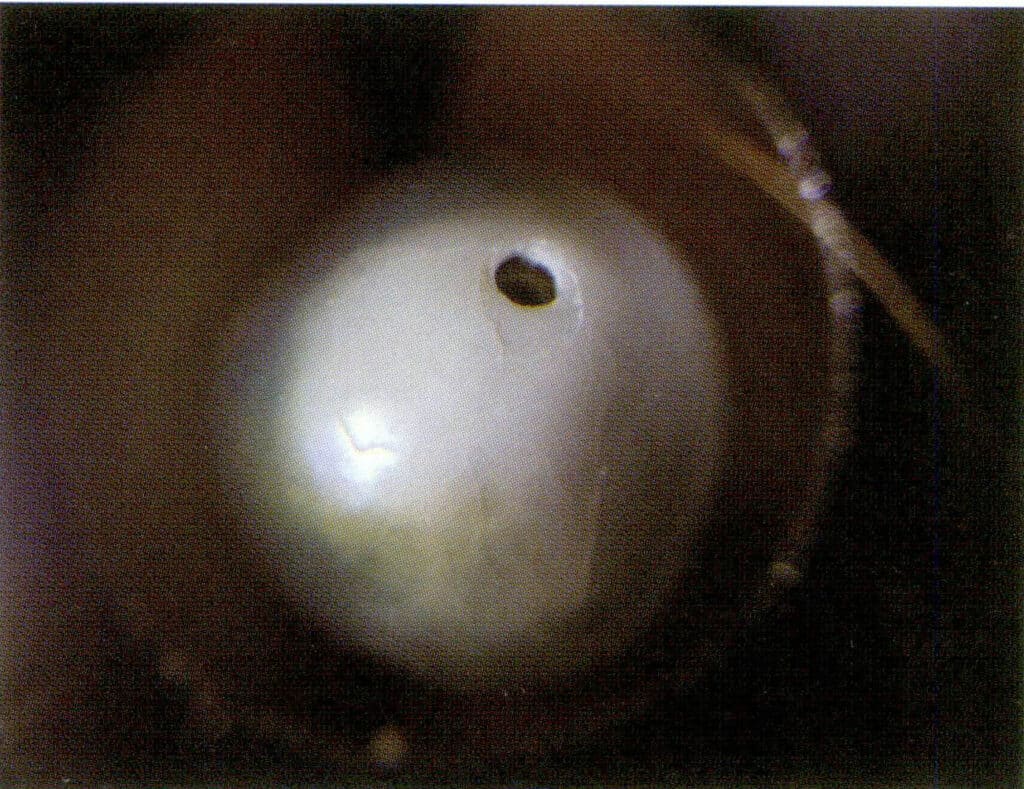
Figure 1-2-55 Layered structure visible on the surface of the nucleated pearl layer and at the pearl nucleus
2. Phase Composition
The inorganic component calcium carbonate in pearls mainly appears in the orthorhombic crystal system as aragonite, with a small amount appearing as calcite in the trigonal crystal system and vaterite in the hexagonal crystal system. The inorganic minerals in the pearl are not exactly consistent with the crystal parameters of the standard aragonite, and the impurity ions may have a some degree of isotropic substitution with Ca2+ in calcium carbonate.
The phase of tungsten carbonate in pearls is mainly determined through testing and analysis using techniques such as XRD, infrared spectroscopy, Raman. Current research indicates that the phase of freshwater cultured pearls is primarily aragonite, with some non-lustrous freshwater cultured pearls containing vaterite. The main mineral phase of seawater-cultured pearls is aragonite, which may contain a small amount of calcite; the surface luster decreases as the calcite content increases. seawater-cultured Seawater pearls produced in China may also contain trace amounts of carbonated hydroxyapatite.
Table 1-2-5 Phase Composition of Cultured Pearls
| Item | Freshwater cultured pearls | Seawater Cultivated Pearls |
|---|---|---|
| Main Phases | (1) Orthorhombic aragonite (2) Hexagonal vaterite | (1) Orthorhombic aragonite (2) Trigonal Calcite |
3. Structure
Pearls are generally composed of a nucleus and a pearl layer.
The nucleus refers to the natural pearl’s nucleus, which consists of microorganisms, biological debris, sand grains, lesions, etc.; the nucleus of cultured pearls is an artificial implant at the core -small beads from shells or the mantle of oysters and clams. The implanted mantle is shown in Figure 1-2-64, and the shell nucleus is shown in Figure 1-2-65.

Figure 1-2-64 The outer membrane used for inserting the nucleus
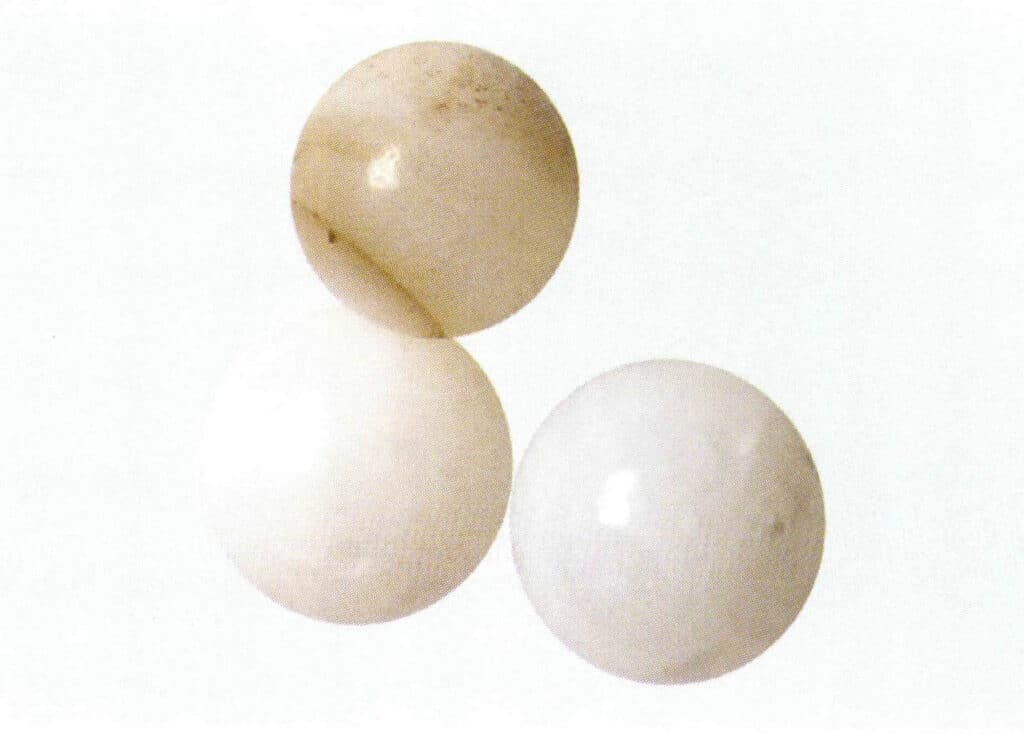
Figure 1-2-65 The round shell nucleus of a nucleated cultured pearl
The nacre layer is the surface that exhibits an iridescent luster, encompassing all non-nucleated pearls from the inside out and the part outside the nucleus of a nucleated pearl. It comprises calcium carbonate (mainly aragonite), organic matter (mainly shell proteins), and water, presenting a concentric layered or concentric radial structure. A distinct layered structure can be observed when a pearl is cut or broken, as shown in Figures 1-2-66 and 1-2-67.
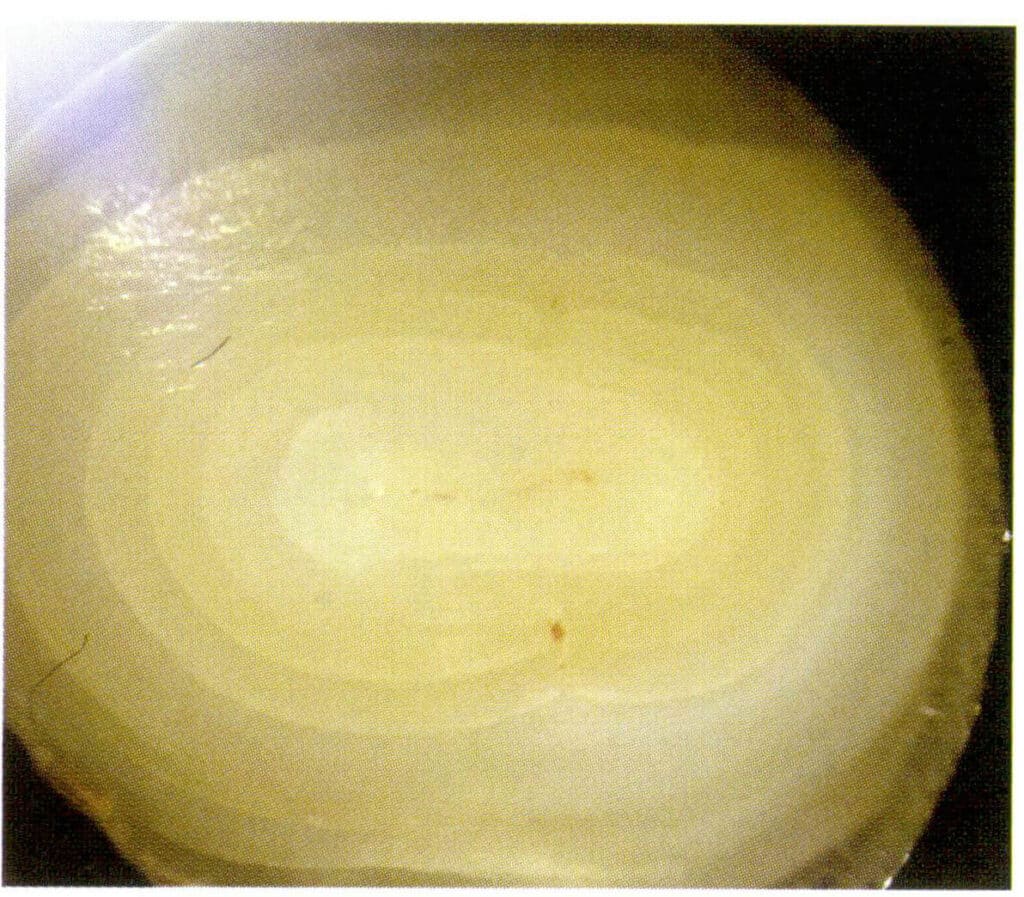
Figure 1-2-66 The concentric layered structure of the nacre layer
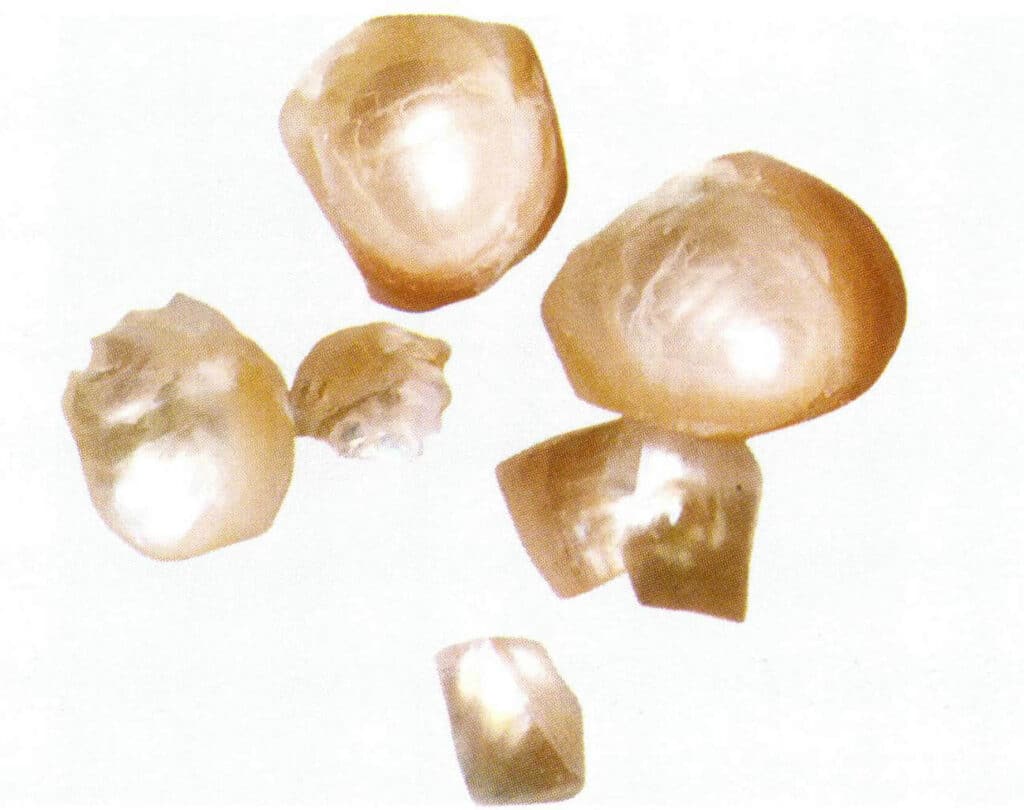
Figure 1-2-67 The concentric layered structure of the nacre layer (after breaking)
The core part of non-nucleated cultured pearls is the mantle, followed by a white or colored layer, arranged in order from the inside to the outside as pearl layers, see Figures 1-2-68 to 1-2-71;
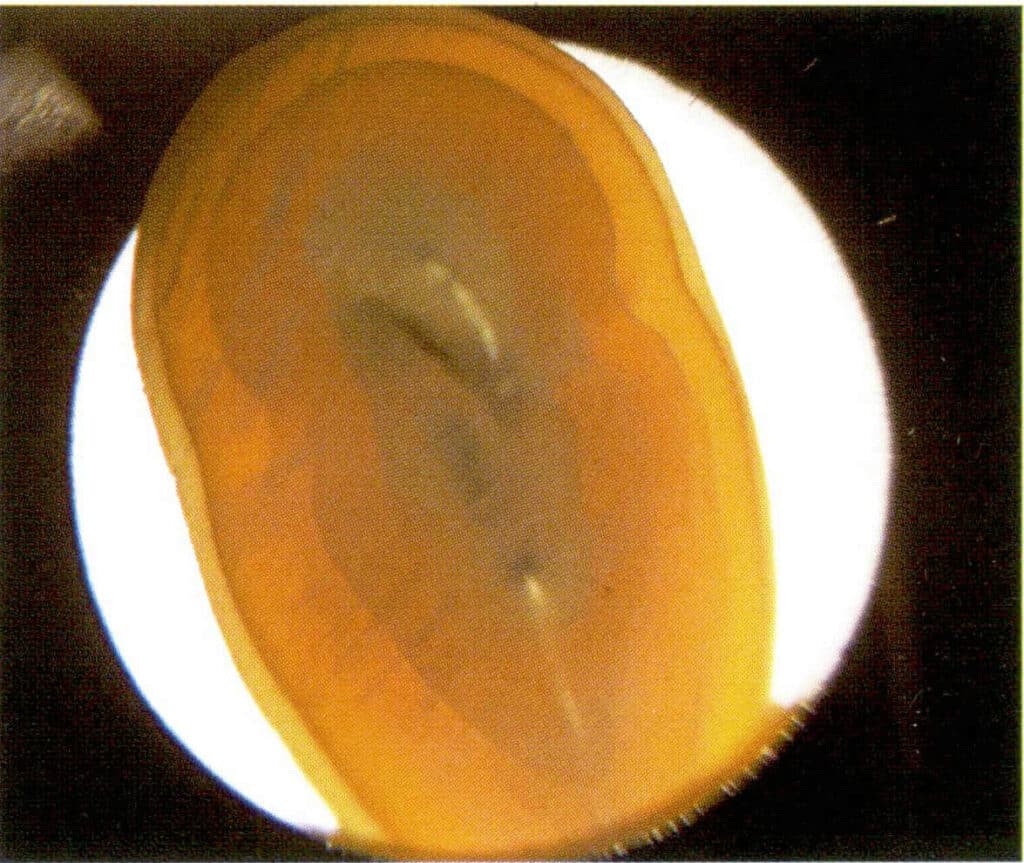
Figure 1-2-68 Concentric layered structure of the pearl layer in non-nucleated cultured pearls (1)

Figure 1-2-69 Concentric layered structure of non-nucleated cultured pearls (2)
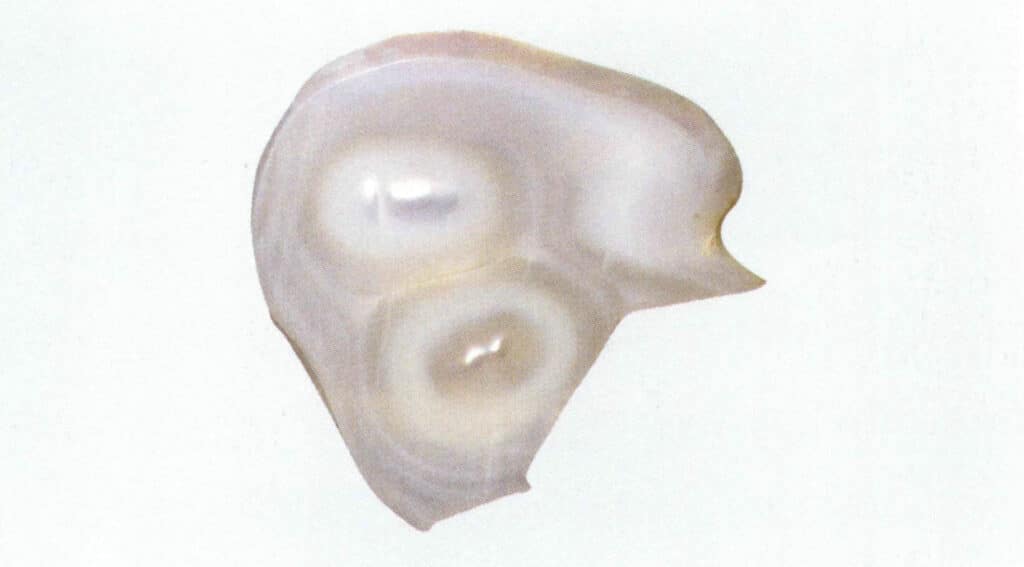
Figure 1-2-70 Concentric layered structure of non-nucleated connected pearls (1)
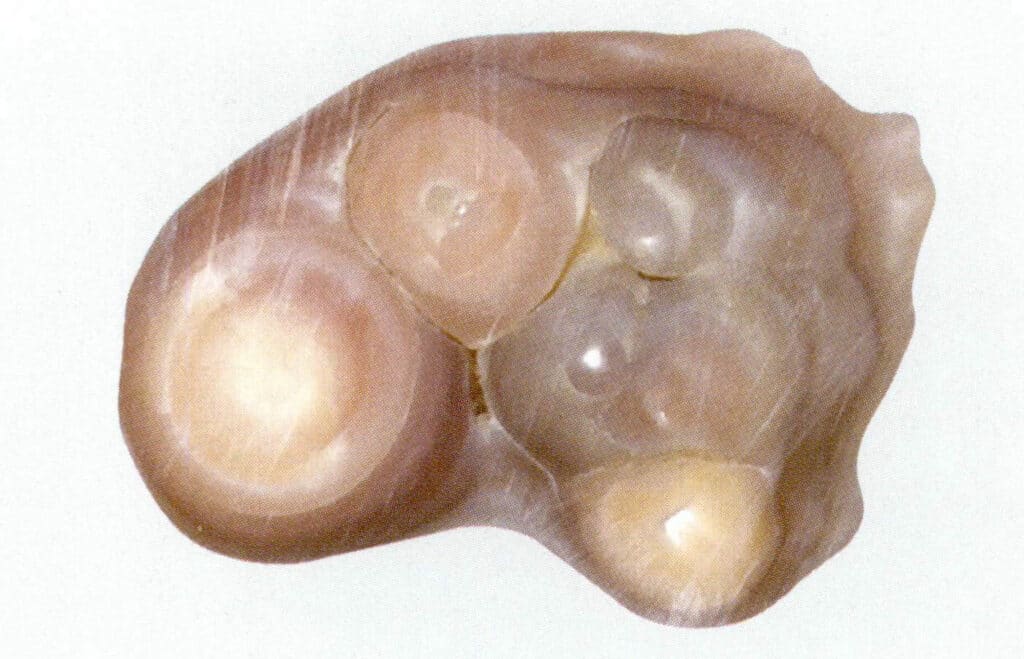
Figure 1-2-71 Concentric layered structure of non-nucleated cultured pearl layers (2)
The interior of freshwater nucleated cultured pearls and seawater cultured pearls is generally shell (white), while the exterior is the pearl layer (black), and the color of the pearl layer is relatively uniform, see Figures 1-2-72 and 1-2-73.

Figure 1-2-72 Structure of nucleated cultured pearls (1)

Figure 1-2-73 Structure of nucleated cultured pearls (2)
(1) Microstructure
By using instruments such as scanning electron microscopy (SEM) and transmission electron microscopy (TEM) to magnify and observe the pearl layer, the micro-concentric layered Structure of the pearl layer can be seen: calcium carbonate crystals are arranged like a mosaic platter to form a single pearl layer, with organic hard proteins existing in the gaps of the calcium carbonate crystals and between the single layers of the pearl layer. This Structure can be vividly compared to bricklaying in architecture, where hard proteins act like cement and calcium carbonate crystals resemble bricks. The size, shape, and arrangement of calcium carbonate crystals directly affect the quality of the pearls; the SEM images of the pearls are shown in Figures 1-2-74 and 1-2-75.

Figure 1-2-74 Layered structure of pearl layers (SEM)

Figure 1-2-75 Surface structure of high-luster pearl layers (SEM)
And the relationship between the pearl layer structure and Luster is shown in Table 1-2-11. This highly ordered layered Structure of the pearl layer is the reason for its high strength and toughness.
Table 1-2-11 Relationship between the Structure of pearl layers and their Luster
| Types of Pearls | High Luster Pearls | Non-Luster Pearls |
|---|---|---|
| Seawater Cultivated Pearls | Pseudohexagonal flaky or flat block aragonite highly orderly arrangement; The center of lamellar aragonite is convex, the edge is low. The accumulation of thin layer of pearl shows a rhythmic ring effect. The average particle size of hexagonal aragonite is 1-8um, and the thickness is about 0.3-0.6um | The center of the surface flat aragonite is concave, while the edges are relatively high; arrangement is often disordered |
| Fresh water cultured pearls | Aragonite crystals are orderly and uniform in size. The hexagonal aragonite with a diameter of 1-4um has a flat surface and a protrusion in the middle. The thickness of the aragonite microlayer is approximately 0.2-0.4 um | Aragonite crystals vary in shape and size, from less than 1 m to a few microns; The central part of surface aragonite flake is concave; Crystal accumulation disorder, loose structure, often appear a few microns to tens of microns of holes |
(2) The formation mechanism of the nacre layer.
Research on the growth mechanism of the nacre layer is not yet complete and remains controversial.
Currently, regarding the deposition of the nacre layer, it is generally believed that the growth of the nacre layer includes several main processes: the assembly of the organic matrix, the initial formation of the mineral phase, the nucleation of individual aragonite platelets, and the growth of aragonite platelets. Silk-like fibers exist in a gel state, pre-filled in the mineralization area; chitin is oriented and controls the directional growth of calcium carbonate crystals. During the mineralization process, the first mineral phase formed is colloidal amorphous calcium carbonate (ACC), and crystals develop on the amorphous calcium carbonate. Acidic macromolecules play a regulatory role during crystal growth.
Regarding The two growth modes of stacking and epitaxy in the pearl layer the mineral bridge theory and the template theory are mainly used.
The mineral bridge theory suggests that aragonite crystals continue to grow through the pores of organic matter plates between different pearl layers. Each newly nucleated aragonite crystal grows vertically along the direction of the outer membrane until it encounters another layer’s interlayer matrix, at which point the vertical growth will stop. Subsequently, the plates grow laterally to form new plates. Once the growing plate encounters the pores in the interlayer matrix of the adjacent upper plate, it will pass through the pores like a mineral bridge, allowing new small plates to continue crystallizing. Relative to the lower plate, this new plate has a lateral offset. As the older plates grow laterally, more mineral bridges are formed between the new plates, resulting in the simultaneous growth of plates at multiple locations.
The template theory posits that soluble organic matter may provide a template for mineral phase crystallization. When the crystallization cycle of a some crystal face of the inorganic phase matches the structural cycle of the organic matrix with active groups, it induces the crystal to grow along this crystal face direction, leading to an ordered directional structure of the crystal, that is, inducing aragonite crystals to nucleate along the (001) crystal face direction, ultimately resulting in all aragonite plates in the pearl layer having their c axis perpendicular to the pearl layer plane. Furthermore, when soluble organic matter exists independently in the solution, it selectively adsorbs onto the (001) crystal face of aragonite due to lattice matching, thereby inhibiting the growth of aragonite crystals in the direction perpendicular to that face, resulting in aragonite crystals forming a plate-like morphology.
4. Cathodoluminescence Characteristics
The luminescence intensity of freshwater cultured pearls under cathode ray excitation increases with voltage within a some range. Still, prolonged high voltage can cause damage to the surface of the pearls due to high temperatures.
Freshwater cultured pearls and the nacre layer of freshwater mother-of-pearl emit yellow-green light under cathode ray excitation, while seawater cultured pearls, treated seawater cultured pearls, and seawater shells generally do not emit light, as seen in Tables 1-2-12 and 1-2-76 to 1-2-79.
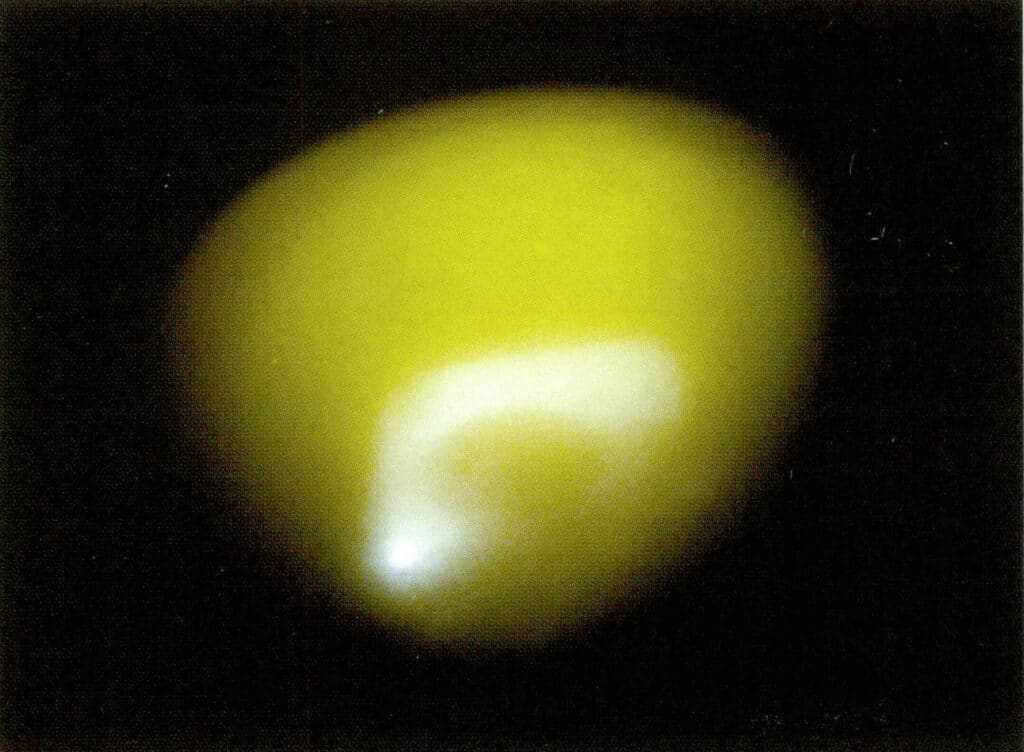
Figure 1-2-76 Cathode luminescence characteristics of freshwater cultured pearls

Figure 1-2-77 Cathode luminescence characteristics of the nacre layer of freshwater mother-of-pearl
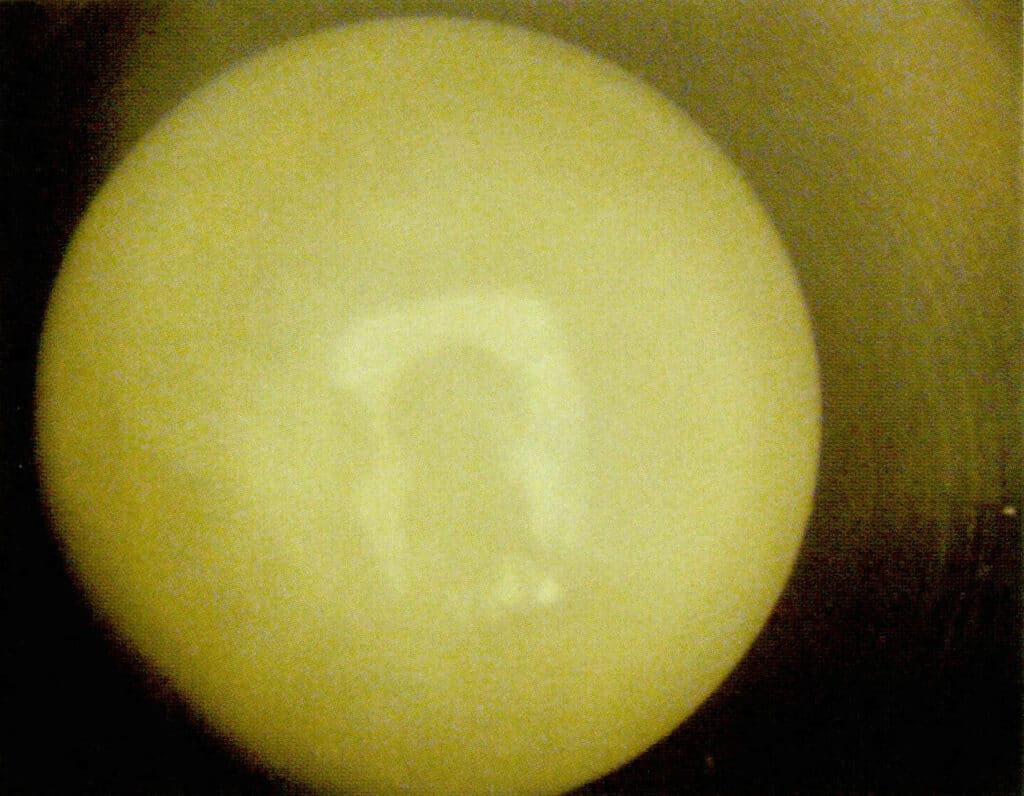
Figure 1-2-78 White seawater cultured pearls do not emit light under cathode ray excitation匚
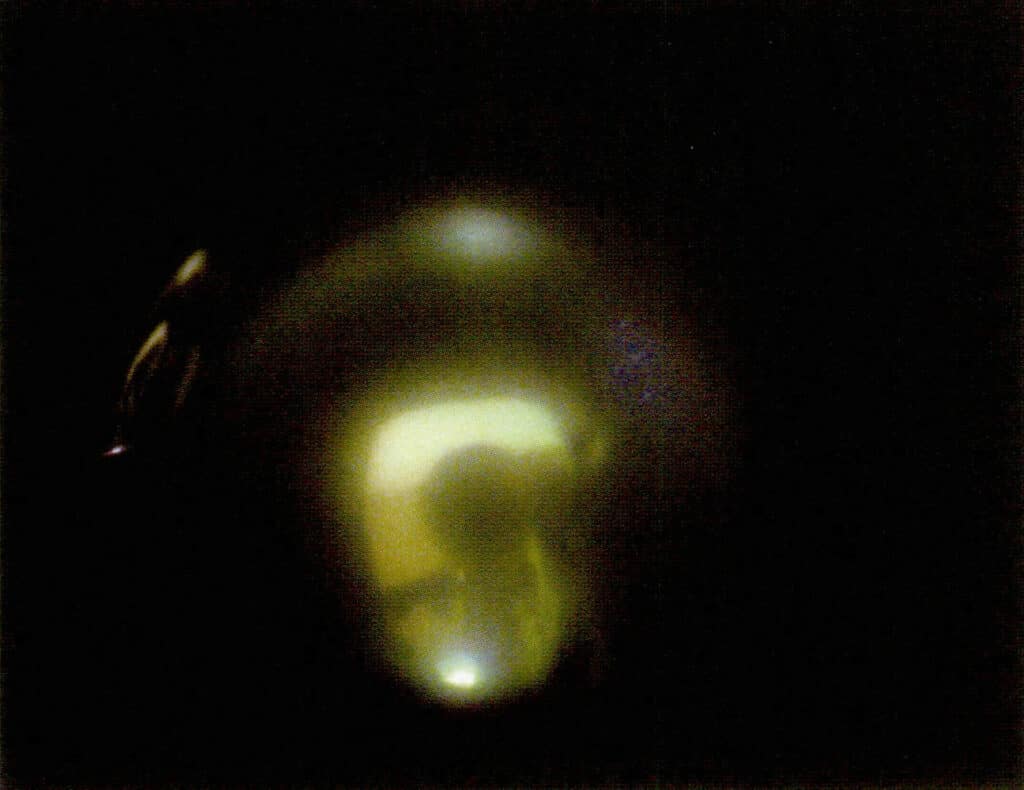
Figure 1-2-79 Black seawater cultured pearls under cathode ray excitation
Table 1-2-12 Cathodoluminescence characteristics of cultured pearls and optimized treated pearls
| Types | Color | Cathodoluminescent color | Microscopic observation under cathodoluminescence |
|---|---|---|---|
| Freshwater cultured pearls | White, Pink, Orange, Purple | Yellow-green | Dense structure, Lustrous, Bright and uniform |
| Fresh water cultured pearls | White, Brown | Yellow-green | The structure is uniform, dense, and lustrous, with visible rings and layered structure, glowing brightly |
| Seawater Cultivated Pearls | Black, gray, yellow, white | Non-luminous | The structure is uniform and dense, bright and lustrous, with visible beams of blue-purple reflection |
| Seawater mother-of-pearl layer | White | Non-luminescent | Structure is uniform and dense, with visible ray bundles reflecting blue and purple light |
5. Mechanism of Body Coloration
The mechanism of body coloration in pearls is relatively complex and lacks a unified understanding. In pearls, organic matrices, and structurally diverse pigments are distributed within the inorganic calcium carbonate, and these various and complex pigments may exhibit colors individually or in conjunction with metal ions. For different pearls, the mechanisms of body coloration mainly include two understandings: porphyrin coloration and carotenoid coloration.
5.1 Porphyrin Coloration
Experimental studies supporting this understanding indicate that the hue and Luster of pearl body color are fluorescent. The body color of pearls is caused by the protein pigment porphyrin and the metal elements that induce fluorescent colors. The combination of porphyrin and metals is called the porphyrin body. Different types of metals combined with porphyrin result in different colors; varying porphyrin content leads to different shades. Fluorescent, colorimetric analysis and quantitative treatment of porphyrin in different colored pearls show that colored pearls have a higher content. In contrast, white ones have less, and low-quality pearls with poor Luster have even less content.
The trace element ion content of colored pearls is generally higher than that of white pearls, indicating that inorganic metal ions may have a corresponding relationship with the color formation of pearls; the organic matter content of colored pearls is also higher than that of white pearls, and it is generally believed that inorganic metal ions may form some kind of coordination relationship with organic molecules. When trace elements in pearls enter the porphyrin core center and form stable complexes, pearls of different body colors correspond to different porphyrin bodies. Therefore, the body color of pearls is determined by the combined effects of these ions and the combined effects of metal porphyrin bodies.
Some studies suggest that the organic pigments in seawater-cultivated black pearls come from the epidermal cells of the pearl oyster and are related to soluble organic proteins; this pigment may be porphyrin. The black pearls from Taqi Di and the gray-black spotted pearls from China are colored by organic pigments, and it is generally believed that the luminescence spectra at 617nm and 676nm indicate the presence of porphyrin.
5.2 Carotenoid pigmentation
Carotenoids are the most common organic compound pigments that plants and natural bacteria synthesize. More than 600 types of carotenoids have been discovered, which are widely present in animals, plants, and microorganisms and are also one of the main natural food colorants. The Structure and function of carotenoids are very complex, and g -g-carotene is their main pigment component.
Carotenoids were found in the nacre layer of freshwater cultured pearls and shells in China. The organic Raman peaks of different colors of fresh water pearls are 1120cm-1, 1132cm-1, 1526cm-1, 1132cm-1 and 1527cm-1 are caused by typical all-trans conjugated double bond carotenoid pigments, while 1132cm-1 belongs to the stretching vibration of C=C single bond (V2), 1527cm-1 belongs to C=C the stretching vibration of double bonds (V1) , The weak Raman peak of 1020cm-1 (V3) may be caused by the in-plane swing of the lateral methyl group in the pigment molecule, and the peak of 1296cm-1 may be related to the lateral methyl group in the molecule. With the color from light to dark, the Raman peak intensity of organic matter changes regularly from weak to strong, as shown in Figure 1-2-81. The color change of freshwater cultured pearls depends on the amount of carotenoids in the pearls. The carotenoid concentration in light-colored pearls is low, while the carotenoid concentration in dark nacre is high.
In addition, the content of metal elements such as Mn, Mg, Zn, Ti, and V is relatively high in colored pearls, which may play a significant role in coloration; as the content of trace elements like Mn gradually increases, the color of the pearls also becomes darker.
